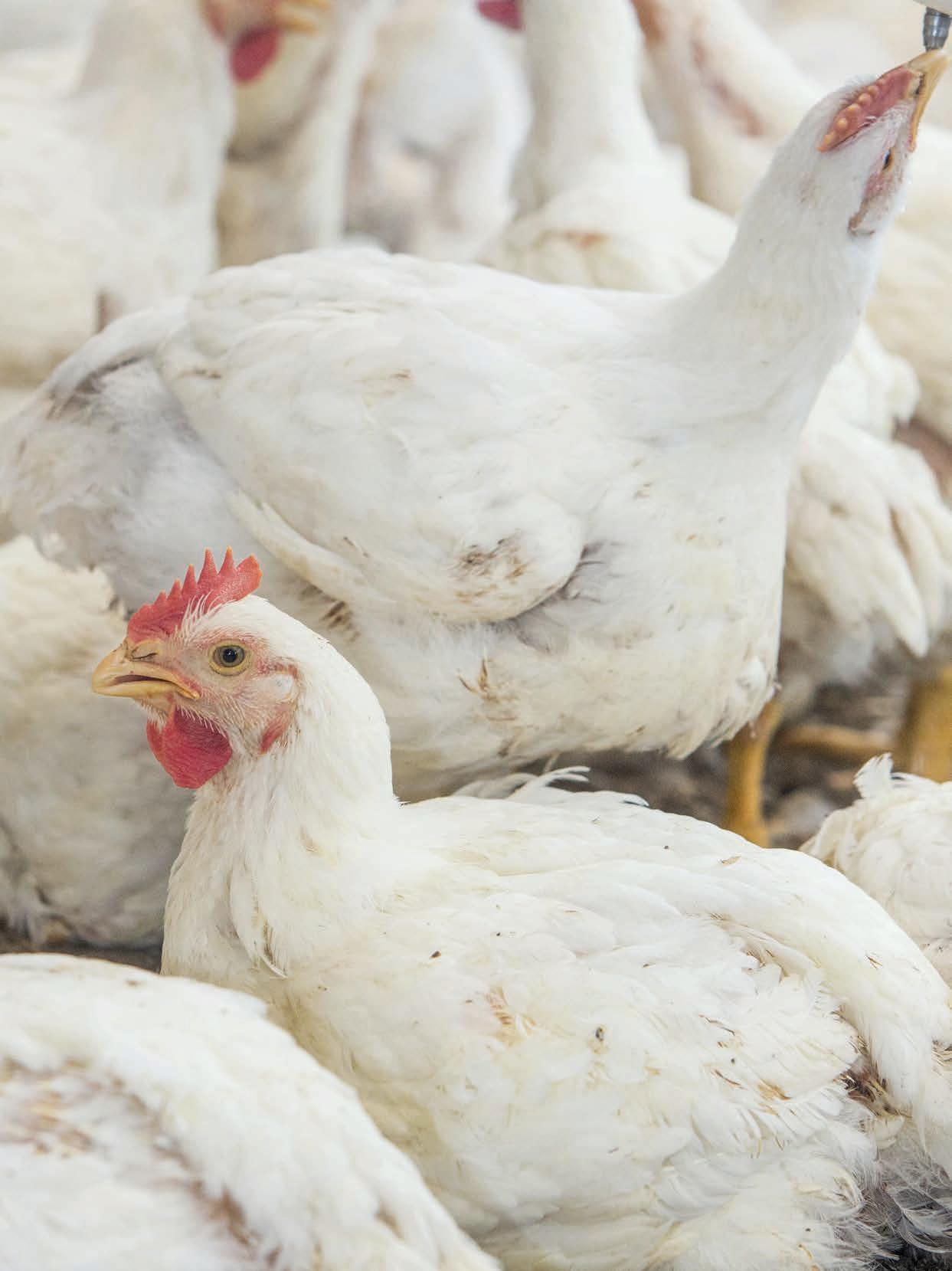

a 11 2022 Zootecnica International –November 2022 –POSTE ITALIANE Spa –Spedizione in Abbonamento Postale 70%, Firenze East Africa poultry consumption trends Understanding egg quality Plant-based antimicrobials against Salmonella in turkey processing
The new feeders
«Gió» range, specifically developed for great poultry farms, thanks to the easiness in the regulation of the feed and to the absence of grill (that avoid chicks perching) have many advantages: they are easy to use and their cleaning is extremely easy and fast too, leading to an overall reduction in labour costs.


CODAF Poultry Equipment Manufacturers • Via Cavour, 74/76 • 25010 Isorella (Brescia), ITALY Tel. +39 030 9958156 • Fax: +39 030 9952810 • info@codaf.net • www.codaf.net
of the
EDITORIAL
Historically, publishing has conquered a place of primary importance in every social context. Even today, when there is more and more talk of “electronic publishing”, printed paper remains one of the main means of disseminating culture and information.
It has been said that the press represents one of the powers that control our society, and the truth of this statement is demonstrated by the attention paid to the press by all political and economic powers. The telematic and IT revolution obviously also affected publishing, but that fact should not be interpreted as a condemnation of the printed word. Electronic publishing is a new technology that represents a new reality for us to face up to and to use. The speed of telematic information has undoubted advantages, which cannot be ignored, but the effectiveness of the written word - especially in technical-scientific journals - will be irreplaceable.
History teaches us that nothing can oppose the force of new things, if they bring progress. It is therefore necessary for us to adapt, to open up to the new, while at the same time we must acknowledge and not forget that complementarities exists in all disciplines.

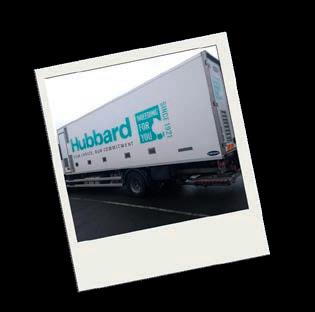


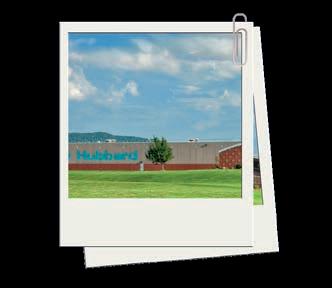
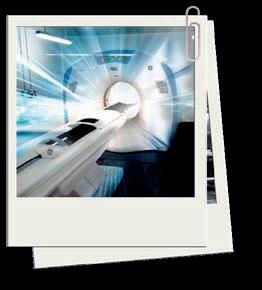

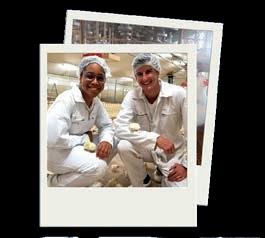
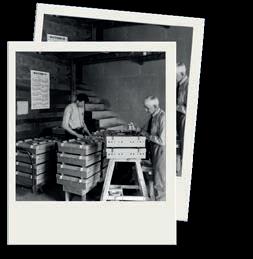


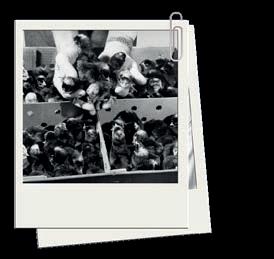

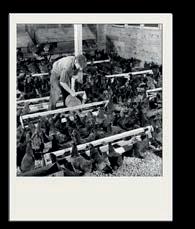

www.hubbardbreeders.com
FIELD CASE
East Africa poultry consumption trends 18


DOSSIER
Understanding egg quality 20
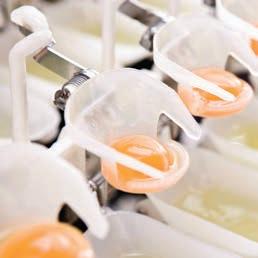
MARKETING
Dynamics and patterns of the poultry industry in the G19 countries between 2010 and 2020. Part 2 – Egg trade 26
TECHNICAL COLUMN
Hatching eggs: the importance of assessing internal egg quality 32
MANAGEMENT
In ovo injection of oregano essential oil at different pH affects hatchability and post-hatching performance in broiler chickens 36 PROCESSING
WORLDWIDE NEWS 4 COMPANY NEWS 14
SUMMARY
MARKET GUIDE................................................................................44 UPCOMING EVENTS ......................................................................47 INTERNET GUIDE 48 40 18 20
Poultry processing ergonomics 38 Plant-based antimicrobials against Salmonella in turkey processing 40
EFSA recommendations to improve animal welfare during transport

Providing more space, lowering maximum temperatures, and keeping journey times to a minimum are all needed to improve the welfare of farmed animals during transport, according to recommendations published by EFSA.
Animal welfare during transport
cluding domestic birds (chickens, laying hens, turkeys etc.) and rabbits. They identify the various welfare consequences that animals may experience during different stages of transportation, the hazards potentially causing them, and the animal-based measures (ABMs) by which they can be assessed. For all species, being fit for transport is of the utmost importance.
“Good animal welfare practices not only reduce unnecessary suffering but also help to make animals healthier. This is a key element for the safety of the food chain considering the close links between animal welfare, animal health and food-borne diseases, in line with the One Health principle that EFSA is committed to”, said Guilhem de Seze, EFSA’s Head of Department for Risk Assessment Production
EFSA has developed quantitative thresholds for the temperatures that should be maintained in a vehicle as well as minimum space allowances for the animals. EFSA also describes the development or progression of various other welfare consequences over time during transport, such as hunger, thirst, and fatigue.

For example, for animals transported in containers (poultry and rabbits), EFSA recommends that the journey duration should be considered as the whole time the animals are kept in the containers. The only way to avoid welfare consequences in day-old chicks is to transport fertilised eggs and hatch them on the farm of destination.

The advice by EFSA is provided to the European Commission in a series of five scientific opinions intended to support its ongoing review of animal welfare legislation in the European Union (EU) – a key element of the EU’s Farm to Fork (F2F) Strategy.



The scientific opinions cover small ruminants (sheep and goats), equids (horses and donkeys), bovines (cattle and calves), pigs, and animals transpor ted in containers, in-





The current EU legislation on the protection of animals during transport entered into force in 2005. Within the framework of the F2F strategy, EFSA’s findings will support the European Commission’s ongoing review of legislation with the aim to align it with the latest scientific evidence, broaden its scope, make it easier to enforce and ultimately ensure a higher level of animal welfare. The Commission’s proposal is expected in the second half of 2023.
Source: European Food Safety Authority
EFSA is the keystone of EU risk assessment regarding food and feed safety. In close collaboration with national authorities a in open consultation with its stakeholders, EFSA provides independent scientific advice and clear communication on existing and emerging risks. Photo credits: Shutterstock.com ISBN 978-92-9499-469-1 doi:10.2805/145091 TM-07-22-938-EN-N Good animal welfare practices not only promote intrinsic animal wellbeing but also help to make animals healthier. This is a key element for the safety of the food chain considering the close links between animal welfare, animal health and food-borne diseases, in line with the One Health principle. ww w.efsa.europa.eu
ANIMALS IN CONTAINERS More space, lower temperatures, journeys up to max 12 hours: these are some of the key recommendations to improve the welfare of animals transported in containers, included in a new scientific opinion by EFSA.
CHICKS The journey duration of animals transported in containers should be considered as the whole time the animals are confined. EFSA recommends journeys up to a maximum of 12 hours, including ‘on farm’ feed withdrawal. Sufficient floor space so all can sit at the same time without overlapping The height of the container should be such that the comb or head does not touch the ceiling when birds sit with their head and neck in a natural posture. The most efficient measure for preventing heat stress is to transport animals in vehicles using effective mechanical ventilation or
EFSA recommends transporting fertilised eggs, instead of day-old chicks, and hatching them on the farm of destination
TIME TEMPERATURE SPACE 12h POULTRY
POULTRY
4 - worldwide newsWORLDWIDE NEWS
EFSA's scientific opinions on RABBITS
air conditioning.
Sufficient floor space to sit in a natural resting posture. The height of the container should be at least 35 cm to ensure rabbits (up to 3 kg) can sit with their ears extended in a comfortable position
RABBITS
max

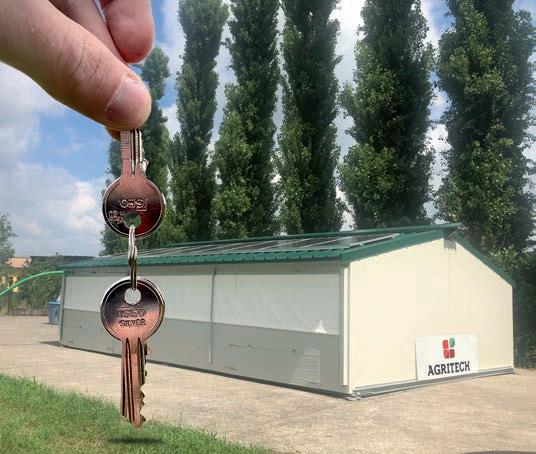
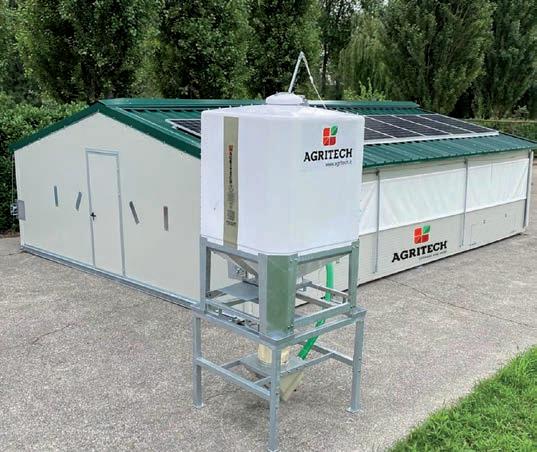

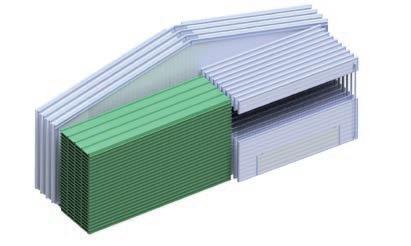
- november 2022 - 5 WORLDWIDE NEWS
Shed 60 m2 Surface Mobile Poultry Shed. Professional design, made in Italy, suitable for free range poultry breeding. 5 unassembled sheds in one truckload Agritech s.r.l. Via Rimembranze, 7 25012 Calvisano (BS) Italy Tel. + 39 030 9968222 r.a. Fax + 39 030 9968444 commerce@agritech.it www.agritech.it
Mobile Poultry
AVEC General Assembly: energy and feed price surge put the EU poultry meat production at risk
Operators in the poultry meat supply chain are struggling to maintain production levels because of the very high energy and feed prices.
There are huge difficulties to pass the additional costs through the supply chain, so the support of the authorities is urgently needed.
Outgoing AVEC President Paul Lopez asks decision-makers to prioritise food and poultry meat production, to guarantee affordable and continuous supply in the weeks to come. As it happened during the Covid-19 crisis, the poultry meat sector is committed to working with the European Institutions to provide a continuous supply of high-quality and affordable poultry products to the EU citizens. But without intervention from policy makers, this is and will continue to be highly challenging.
The poultry meat producers are affected all along the supply chain,

by unprecedent increase of costs of energy, (especially natural gas, fuel, and electricity), CO2, packaging and external labour which threaten the continuity of the production. Energy and gas supply especially is critical for primary breeding of poultry to maintain the welfare of the birds.
The Russian invasion of Ukraine has also resulted in a substantially raise of the feed prices, which represent 70% of the production cost of poultry. This has led to a situation where farmers may prefer to stop the production in the coming weeks rather than taking the risk of big financial losses.

“ Policy-makers should continue to prioritise the poultry meat sector for access to both energy and feed, similar to Covid crisis where poultry was considered as a crucial sector. However, the simple access to energy and feed material is not sufficient. If affordable and stable prices cannot be guaranteed the survival of the sector is at stake. The Commission must support Member States to intervene to bring energy prices reasonable levels, increase liquidity on energy markets, diversify energy supply, and look for solutions such as placing a cap on prices for energy/feed. Sustainable production is our priority, and we see our sector as part of the solution when it comes to climate change. Therefore, we ask the authorities to strongly support our sector to develop and accelerate the transition towards sustainable sources of energy, to limit the dependence to foreign fossil fuel and feed suppliers, and increase the resilience of the sector ”, concludes outgoing AVEC President Paul Lopez
Source: AVEC
6 - worldwide newsWORLDWIDE NEWS
©congerdesignPixabay



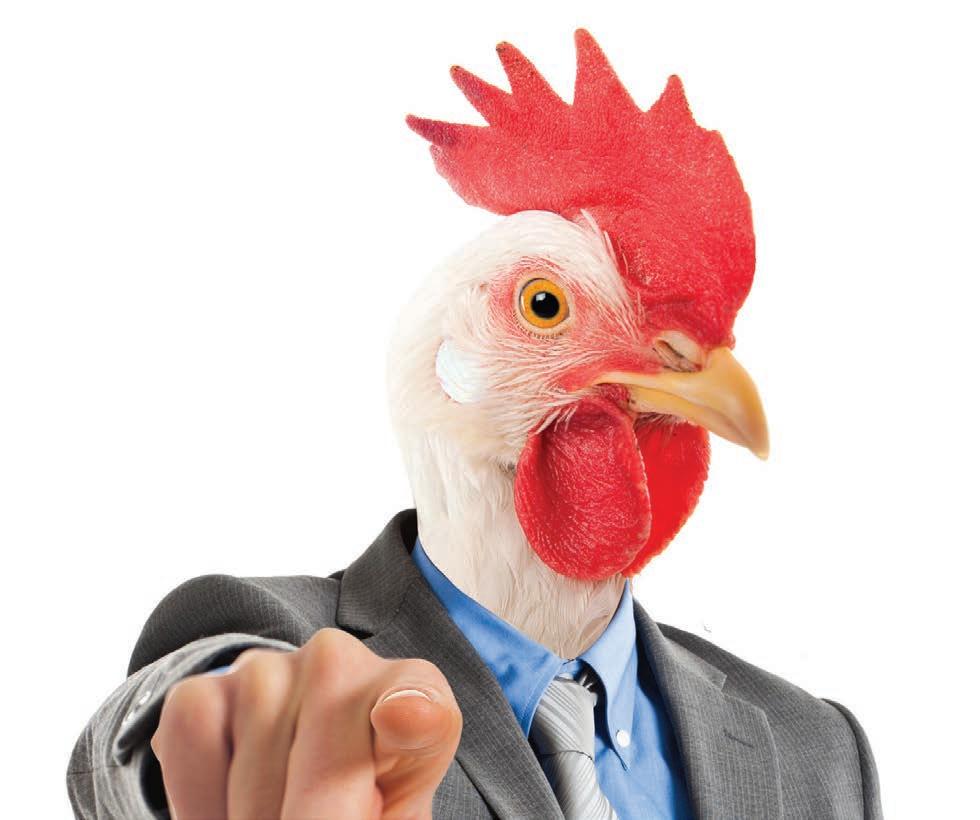
7 Since 1960 Display our complete range of products on our homepage I WANT AZA! THE MOST INNOVATIVE RANGE IN THE POULTRY INDUSTRY We design and manufacture in Italy to guarantee maximum quality at competitive prices Leader in pig & poultry equipment Via Roma 29, 24030 Medolago (BG) Italy - Phone +39 035 901240 - info@azainternational.it www.azainternational.it Old Aza factory BROILERS - TURKEYS - LAYERS - ROOSTERS - BREEDERS Breedaza system Image: Fotolia© Minerva Studio
SPACE 2022: a focus on climate and youth
SPACE took place from Tuesday 13 to Thursday 15 September in a very warm and positive atmosphere, marking its 35th anniversary. Attendance was very high over the three days at the Rennes Exhibition Centre.

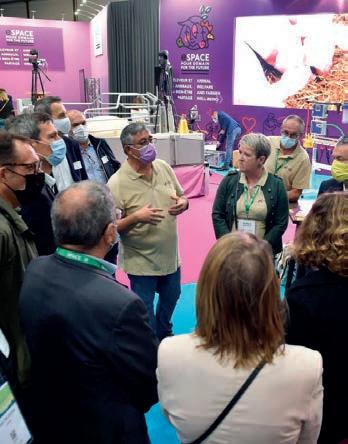
The livestock industry provides solutions to face climate challenges, and SPACE was able to demonstrate this. One of the biggest new features of this year’s event was the first Youth Forum, a space for young people organised in collaboration with agricultural teaching networks and opened by the Minister of Agriculture and Food Sovereignty, Mare Fesneau, at the start of the Expo. This new space enabled young people to voice their visions for their future jobs.
SPACE 2022 was extremely successful, with over 90,000 visitors (90,108, of whom 8,406 came from 120 different countries), and close to 1,200 exhibitors (of which 300 were international businesses and 250 were taking part in SPACE for the first time).
The event recovered its full international dimension af ter two years during which travel by visitors from abroad was heavily restricted. Delegations from around the world came to meet exhibitors, visit farms and draw inspiration from our organisational models. Many contacts were established with delegations from West Africa (Senegal, Ivory Coast, Mali, Benin, etc.), Cameroon, Democratic Republic of Congo, Morocco,
Algeria, Vietnam, the Philippines and numerous European countries.
Talks organised for the first time in partnership with Promosalons led to important business exchanges with top buyers from Colombia, Chile, India, Saudi Arabia, Turkey, Morocco and Nigeria.
In a context marked by drought and the soaring price of energy and raw materials, climate was the annual theme developed by the Espace for the Future. Through the numerous debates, conferences, products and equipment presented by exhibitors, SPACE 2022 provided an opportunity to show that agricultural stakeholders are already taking measures aimed at reducing the impact of livestock farming on the climate

SPACE is also unique for its capacity to host around 100 conferences each year, allowing all stakeholders in the agricultural sector to learn about and discuss topical issues such as new technologies, solutions for reducing climate impact, establishing and selling farms, protein self sufficiency, research into new fodder crops, CAP issues, etc.
For its anniversary, SPACE 2022 was the epitome of a professional, international and convivial trade show. Despite a difficult context, these three days have proved that with abundant and constructive dialogue, high at tendance by visitors and exhibitors and the expo’s very positive dynamic, 35 years af ter its first edition SPACE is an exceptional showcase for the livestock industry. A modern, constantly-evolving industry with a bright future and a resolve to feed society and meet its requirements.
Source: Space
8 - worldwide newsWORLDWIDE NEWS
Aviagen Advantage Breeds
The right bird for the right market. Broadest portfolio in the broiler breeding industry. Our unequaled brand diversity will help you meet the needs of your market. Let us show you at aviagen.com.


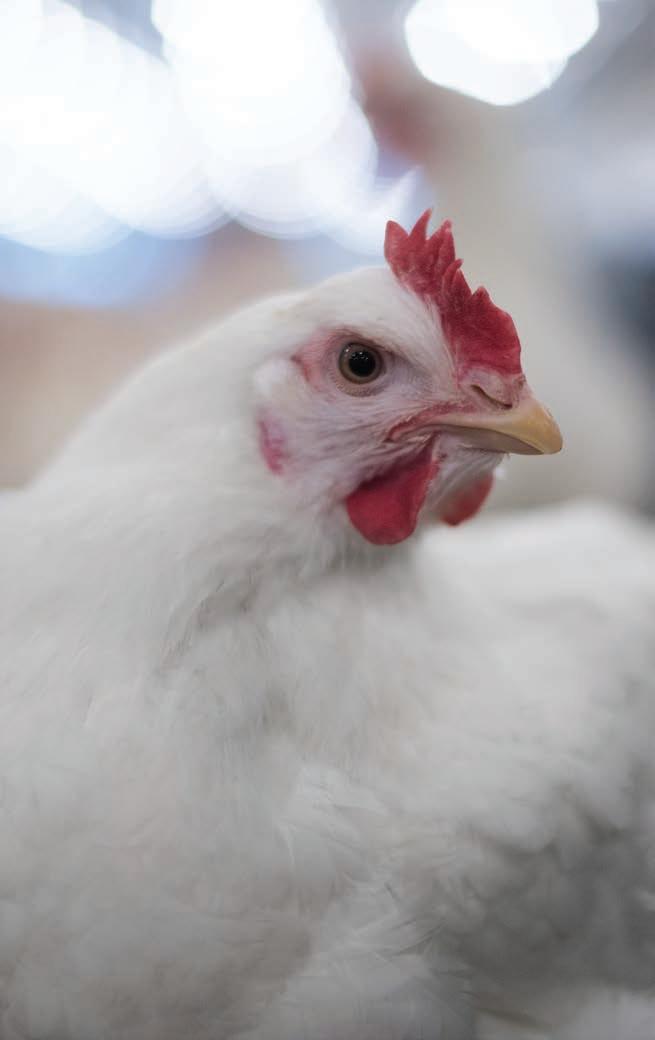


IFIF and FAO held their 21st annual meeting in Rome
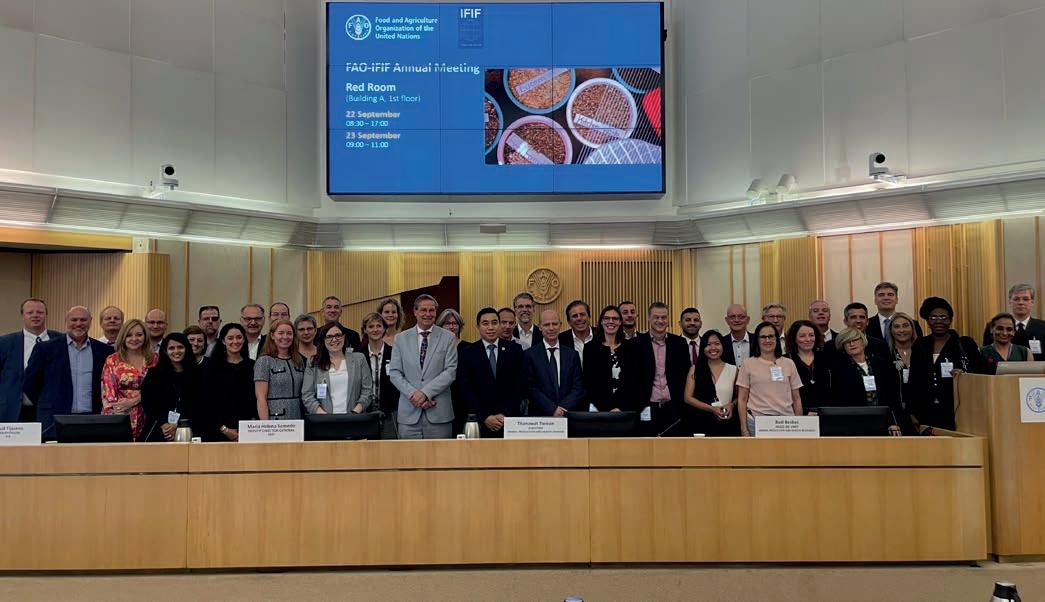
The International Feed Industry Federation (IFIF) and the Food and Agriculture Organization of the United Nations (FAO) held their 21st annual meeting to further strengthen their collaboration on critical issues to ensure safe, nutritious and sustainable feed and food.
The meeting was officially opened by Mrs. Maria Helena Semedo, Deputy Director-General FAO and Mr. Thanawat Tiensin, Director Animal Production and Health at FAO, together with Mr. Ruud Tijssens, IFIF Chairman. They welcomed the IFIF delegates representing over 80% of global compound feed production and reiterated their commitment to this longstanding partnership and agreed to continue to strengthen their work together to tackle the challenges facing the feed and food chain.
Mr. Tiensin reaffirmed the importance of “collaboration between the public and private sector, as well as other stakeholders, to support the evidence-based key role of the livestock sector for achieving United Nations Sustainable Development Goals (SDGs) particularly - zero hunger. Also, for improving nutrition quality and supporting livelihoods worldwide in light of high-level global reflec -
tions on sustainable agri-food systems. We will continue working together with all stakeholders in promoting sustainable, resilient, inclusive, and efficient livestock transformation.”
Mr. Tijssens said “our joint meeting with the FAO once again underlined our strong partnership as IFIF continues to support key FAO initiatives such as the Livestock Environmental Assessment and Performance (LEAP) Partnership, the Global Agenda for Sustainable Livestock and the Multi-stakeholder Partnership for Feed safety.” Mr. Tijssens congratulated “the success of LEAP going into Phase 4 and reaffirmed the support of implementing the LEAP guidelines through the Global Feed LCA Institute (GFLI).
“The publication of the updated FAO and IFIF Manual on Good Practices for the Feed Sector was a key milestone
10 - worldwide newsWORLDWIDE NEWS
as we work together on Capacity Development for feed safety. IFIF continues to contribute to FAO’s work to address antimicrobial resistance including through advancing nutritional innovation to support animal health. IFIF looks forward to the 16th International Feed Regulators Meeting (IFRM) in 2023, which is another great example of IFIF FAO collaboration positively impacting the feed and food chain.”
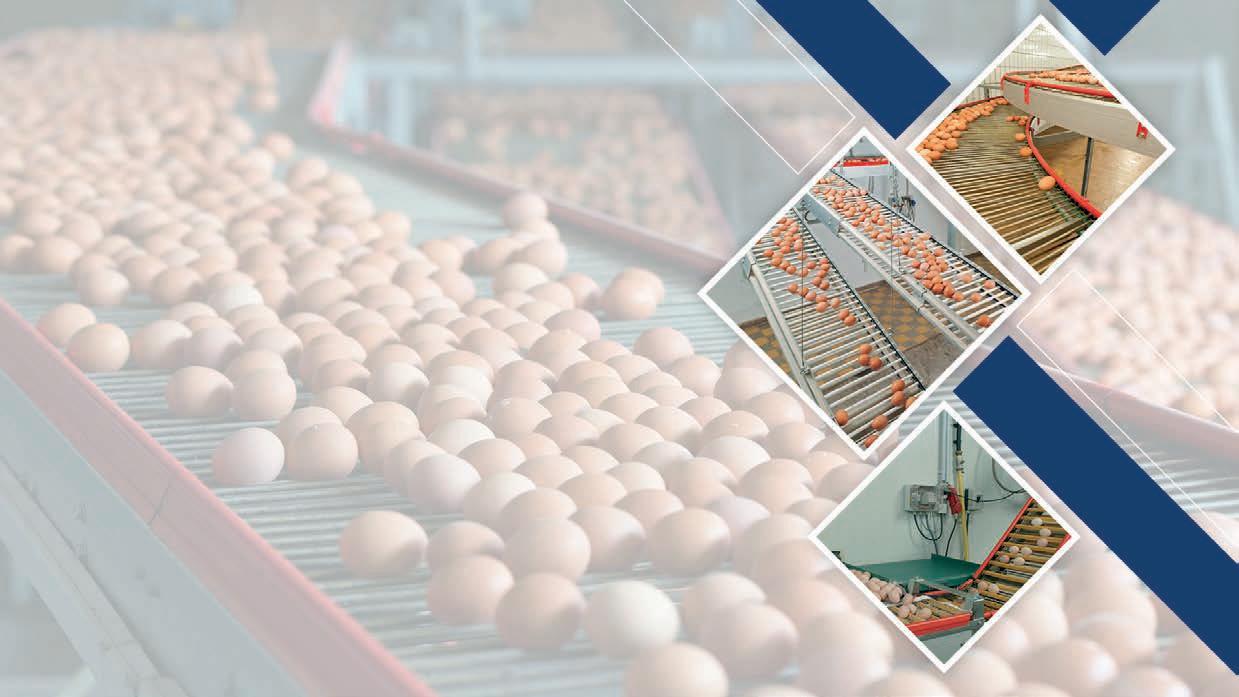
Mr. Tijssens added that “together with the dedicated colleagues at the FAO we contribute to building a solid science-based approach to support safe and sustainable animal nutrition to bring quality and affordable food to a growing world population, producing more with less and even better under diverse production systems. The high quality of exchanges and cooperation towards the United Nations Sustainable Development Goals (SDGs) continue to build on our achievements and together with all IFIF members I am pleased our relationship with FAO continues to strengthen year to year. In addition, the Global Feed & Food Congress (GFFC), which we will organize
with FAO technical support in Bangkok in March 2024, will be an important opportunity for us to further strengthen collaboration with the Asian feed sector and stakeholders.”
Daniela Battaglia, Livestock Production Officer at the Animal Production and Health Division of the FAO, said “FAO and IFIF have a long standing partnership and this meeting addressed a number of critical issues of common interest, such as the need for capacity development to ensure feed safety and the importance of collaborating to tackle the containment of antimicrobial resistance (AMR). FAO is committed to work with the private sector and the feed operators and believes that they can valuably contribute to make the livestock and food sectors more responsible and sustainable and to achieve important goals such as public health, and animal health and welfare.”
For further information, please visit www.lubingsystem.com Or send an e-mail to info@lubing.it
- november 2022 - 11 WORLDWIDE NEWS
!lanigirO
Source: IFIF
Researchers developing tool to help poultry producers realize full value of solar technology
Michael Popp, professor of agricultural economics and agribusiness, spoke about how producers could utilize the Poultry Solar Assessment tool (PSA). The PSA tool assists producers make decisions about using solar energy on their operations.

professor of agricultural economics and agribusiness for the Arkansas Agricultural Experiment Station, said it could be a pricy endeavor, but one that can help a grower’s balance sheet in the long run.

The Agricultural Experiment Station is the research arm of the U of A System Division of Agriculture. The Center of Excellence for Poultry Science includes both research and extension activities of the division.
“We have analyzed poultry farm installations ranging in installation cost between $250,000 and $600,000,” Popp said. Associated 30-year total profit in today’s dollars ranged from $75,000 to $280,000 for those size installations. “What you are doing is replacing part of your electricity bill with up-front known costs. You know how much electricity you will generate; you know your depreciation, insurance, interest and property tax cost when you install,” he said. “As such, solar panels reduce your exposure to electricity cost volatility.”
Their analysis included tax credits and, to a much lesser extent, grants from REAP, the Rural Energy for America Program.
Decision assistance
Poultry producers considering use of renewable energy in their operations will have a free tool this fall to help them determine whether solar is right for them.
Yi Liang, associate professor of biological and agricultural engineering and a researcher in the Center of Excellence for Poultry Science, conducted solar energy research in 2021 on an Arkansas poultry production operation and found it offered significant savings. The poultry grower saved more than 90 percent off his annual electricity expense, Liang said. He paid only account charges — between $15 and $25 per month — in 11 out of 12 months of utility bills in 2021. The up-front investment of solar technology varies from operation to operation. Michael Popp,
The data inspired Popp and Liang to develop an online decision support software tool to help growers assess whether solar is feasible for their farms. Popp said he wanted to have the Poultry Solar Assessment tool available for download in October. “The Poultry Solar Assessment tool uses farm-specific information to estimate system size as well as appropriate electricity rates on the basis of the last 12 months of electric bill information,” Popp said. “The user can then choose financing terms, as well as how long they think it would take for them to realize income-tax-saving benefits.”
Popp has developed a line of decision support tools that
12 - worldwide newsWORLDWIDE NEWS
Michael Popp, professor of agricultural economics and agribusiness, spoke about how producers could utilize the Poultry Solar Assessment tool (PSA)
help Arkansas farmers easily analyze the advantages and values of choices they must make in every segment of the state’s agricultural industry. They are available for free download at agribusiness.uark.edu/decision-support-software.
Solar outreach
Liang and Walter Bottje, poultry science physiologist, hosted an educational program in July to debut the Poultry Solar Assessment tool and share the benefits of utilizing solar energy in poultry production.
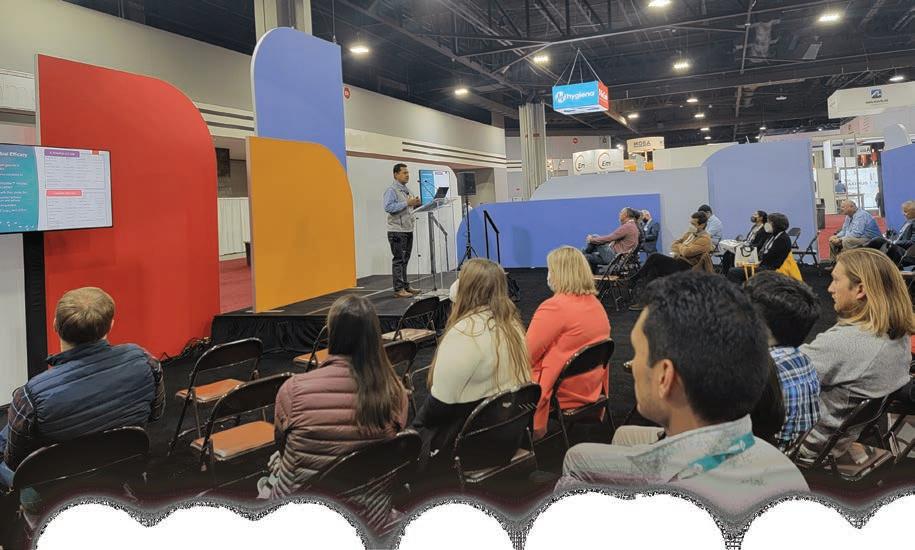
“Adding solar technology is a way to lower the cost of production and displace fossil fuel associated with electricity generation with a renewable resource - sunshine,” Popp said during the event. “Doing this cost effectively, given current government tax benefits, is an added advantage.”
As part of the program, Marvin Childers, president of The Poultry Federation, gave a presentation on net metering and legislation surrounding solar energy in Arkan-

sas. Net metering is a method of billing electric utility customers who use both the power generated by their own renewable energy, such as solar panels, as well as power supplied by an electric company. When a customer produces more electricity than they consume, the excess energy is transmitted to the company’s grid, where it’s used by other customers. The customer is credited for the excess energy they transmitted to the company’s power grid.
“The additional feature of the Arkansas net meter policy includes meter aggregation, meaning the customers can offset all meters under their name using a solar array. This is attractive for agricultural producers since they have meters for different operations and in various locations,” Liang said.
Liang said the Center of Excellence for Poultry Science is planning another solar information event in the fall. It will provide another opportunity to understand the technical and economic aspects of solar technology and ask questions about it.
Source: University of Arkansas



































- november 2022 - 13 WORLDWIDE NEWS
IPPE IPPE IPPE IPPE IPPE MEETS YOUR LEARNING GOALS The 2023 IPPE will offer 80+ hours of education programs and TECHTalks. IPPE will meet your learning goals at this powerhouse of a show in January! JAN. 24 - 26, 2023 ATLANTA, GA USA ippexpo.org
SmartVac™: the next generation of in-ovo vaccination and nutrition
Royal Pas Reform has launched its latest innovation in early nutrition and animal welfarefriendly production practices, the SmartVac™ in-ovo vaccination and nutrition system.

A new, patented technology, SmartVac™ allows 100% safe, consistent and accurate in-ovo vaccination and nutrition. It delivers the injectables only into the amniotic fluid, thus preventing possible injury to the growing embryo.
SmartVac™ will enable the poultry industry to apply a wide range of vaccines in-ovo, including Gumboro, Marek, ND and Coccidiosis vaccines. This is optionally performed in combination with nutritional components –for chickens with a healthy gut, favourable microbiota, enhanced immunity, and thus improved field performance.
SmartVac™ is designed to maximise the safety of the injection process, by focusing on the development level and needs of the growing embryo. The Embryo Soft Touch ® sensor on the injector allows automatic and in-
dividual adaptation of the injection depth to each single embryo, regardless of egg and embryo size. EST® also detects when the setter tray has an empty egg position, or contains non-viable eggs (infertiles or early deads) helping to reduce wastage of valuable vaccine. Only eggs containing grown embryos are inoculated with vaccine or nutrition.
For more detailed information visit www.pasreform.com/smartvac
14 - company newsCOMPANY NEWS
Giordano celebrates 60 years of activity
On 17 September, in their historic headquarters of Caraglio (CN), the Giordano family celebrated its sixtieth year of activity in the poultry sector with a large party together with partners, distributors and customers.
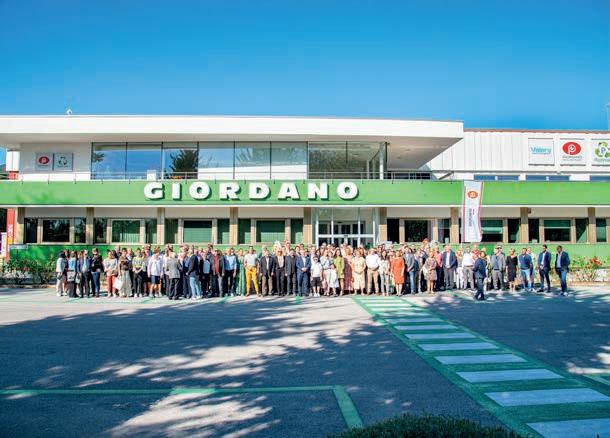
28 countries participated in the celebrations, demonstrating how much Giordano Poultry Plast has grown over the years, starting with distribution aimed at the Italian and French markets, to then expand throughout Europe and then to the rest of the world.


Founded in 1962 by Osvaldo Giordano, the company has been occupying a leading position in the poultry industry for 60 years. Their in-depth direct knowledge of the poultry industry has meant that they have been able to design and manufacture a range of products well suited to meet the technical and practical needs of the various sectors of the world wide poultry industry. Over 200 people from
During the day, a visit to the company premises was organized, during which guests were able to closely observe the production process of the plastic materials and equipment designed for the poultry industry that have made the company famous all over the world. A lunch followed during which Osvaldo, Oscar and Enrico Giordano presented awards to a selection of historical collaborators and new partners from around the world. The celebrations ended with a gala dinner at the Filatoio Rosso di Caraglio, the oldest remaining silk factory in Europe and one of the few in Italy to have been saved and which now serves as a museum.
- november 2022 - 15 COMPANY NEWS
Roxell launches Fortena™ chain feeding system for hens in the production period
Roxell, the leading manufacturer of automatic feeding, drinking, nesting, heating and ventilation systems, launches the Fortena™ chain feeding system for broiler breeders in the production period. Roxell thus completes its total range for feeding, which now contains a solution for every type of poultry farmer. These feeding systems are a component of Roxell’s 360° range for farm equipment with innovative drinking systems, nests, heating, ventilation and controllers.
The Fortena chain feeding system is not just a different version of the current systems on the market. The design of the chain, feed trough and corner wheels has been taken care of by Roxell’s feeding experts. The result is an innovative chain feeding system that improves and speeds up the feed intake of the hens and reduces residual feed. Discover a few of these features below.
Feeding systems for every type of poultry farmer

“It may be surprising that as a notorious pan-feed promoter, Roxell now also has a chain feeding system, but actually it’s a logical step,” says Frank Hartmann, Marketing Manager at Roxell. “We have been working
hard on broadening the range for 10 years. The excellent performance of pan feeding systems is an indisputable advantage. However, those who opt for ease of use and visibility will find an excellent alternative in our chain feeding system. A chain feeding system therefore also belongs in a 360° product range. In short, today Roxell has a solution for every need.”
New chain feeding system, robust and convenient
“The Fortena chain feeding system is not a copy,” so says Inge Van Daele, Product Manager at Roxell. “Our systems are all innovative, durable and performant and this chain system is no different. Specifically, our feeding ex-
16 - company newsCOMPANY NEWS
perts worked on the design of the chain, feed trough and corner wheels. That is why the feed intake improves with Fortena and that is due to the greater ease with which hens eat. The feed remains intact better and the hens get to the feed more easily. Moreover, the new corner wheels require hardly any maintenance. Finally, we use high-quality materials and techniques to guarantee the longevity for which Roxell is known.”
Innovation for better feed intake
• The Fortena chain is a unique design from Roxell with large, open links that take up 25% less space. As a result, there is less friction between the feed and the chain. Because the feed pellets remain intact, the hens also eat them more easily and faster.
• The rounded feed trough promotes access, which limits feed loss. The grill from which the suspension leads is anchored to the feed trough.
• Thanks to an adjustable feed volume (6 positions), different feeding regimes are possible, always with an even and fast feed distribution.
Ease of use with extra durability
• We limit wear on the chain by connecting long sections of feed trough with connections made of polyamide.
• Lubrication of corner wheels is unnecessary due to ball bearings instead of plain bearings.
• We drastically reduce the breakage of chain links by using extra strong connecting links.
Flexibility for great performance

The Fortena chain feeding system offers the poultry farmer flexibility in the way of management:
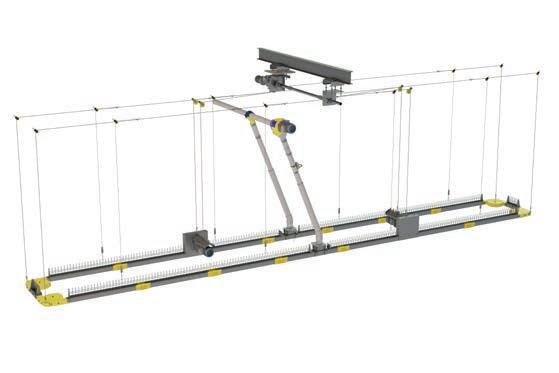
• you can choose from 2 speeds for the feed distribution;

• the feeding circuit can be winched up, but is also available on legs;
• you can automate and monitor the feeding process with a iQon™ feed computer;

• the feed supply takes place directly (with day bins) or indirectly (via hoppers on the circuit).
You can find more information about the most important features on www.roxell.com/fortena-chain-feeding-system
First choice in agricultural ventilation components










- november 2022 - 17 COMPANY NEWS
tpi-polytechniek.com tpi-polytechniek.com | The Netherlands
East Africa poultry consumption trends
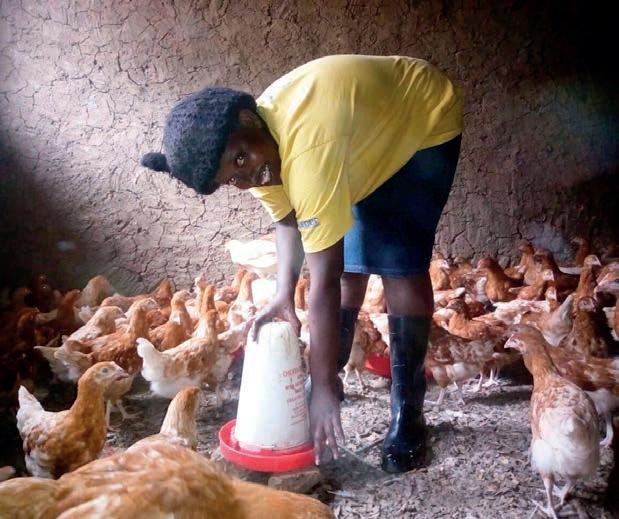
Africa’s population growth is expected to rise from the current 1.24 billion people to 2.4 billion in 2050 if the current annual increase rate of 2.42% is maintained, hence creating a huge demand for the supply of poultry and poultry products for domestic consumption.

A mix of factors such as the change in demographics, growth in urbanization, product pricing and even prevailing cultural beliefs could be some of the drivers shaping the continent’s poultry meat and eggs consumption trends. In fact, a recent joint report by the Organisation for Economic Co-operation and Development (OECD) and Food and Agriculture Organization (FAO) says general meat consumption in Africa is expected to grow by 30% between 2021 and 2030 driven largely by the region’s population growth. “Consumers are attracted to poultry due to lower prices, product consistency and adaptability, and higher protein/ lower fat content,” the report said. Globally, the report estimates consumption of poultry meat could increase to 152 million tonnes
by 2030, accounting for 52% of the additional meat consumed. East Africa, one of the regions in Africa with fast-growing economies, has in recent years reported rapid growth of its poultry industry fueled mostly by the fast-growing urbanization, increase of the middle class population, a rise in the number of quick service restaurants such as American fast food restaurant chain, KFC, especially in key towns. The increasing awareness about the importance of animal protein in addressing Africa’s malnutrition is equally driving up demand for poultry meat and eggs.
Although growth of region’s poultry market is not uniform across all the Eastern Africa countries including Kenya, Tanzania, Rwanda, Burundi, Uganda and Democratic
18 - field reportFIELD REPORT
Shem Oirere
©Albrecht FietzPixabay
©Yeanagro
Republic of Congo (DRC), some of the governments are undertaking major developments that require additional investments such as promoting the rearing of exotic poultry breeds to meet the increasing consumption demand for poultry meat and eggs.
Tanzania is one of the East Africa countries that has come up with a roadmap to increase the additional investment in its poultry sub-sector but also to define the activities to carry out in wooing more Tanzanians and visitors into the country to consume chicken and related poultry products.
Prior to 2016, Tanzania’s Ministry of Agriculture, Livestock and Fisheries says the national average per capita consumption of chicken meat was about 0.7 kg as well as 6.8 kg for eggs. However, Tanzania’s emergent middle class, estimated to be 10% of Tanzania’s 64 million people, the growing mining industry that contributed 5.1% to the national GDP with USD 2.96 billion in 2018, up from the USD 1.9 billion in 2014, are driving up demand for poultry meat and eggs. Moreover, the demand for poultry meat and eggs in the East African country has been positively impacted by the improved performance of the country’s tourism sector that reported a 7.9% surge in earnings for 2019 to USD 2.6 billion compared to 2018 driven by an increase in the number of international visitors from 1,505,702 to 1,527,230. Tanzania, which is anticipating an increase in demand for poultry meat and eggs in the domestic market, is implementing a new plan to ensure adequate supply of poultry products.
The US$4 million plan was initially scheduled to be implemented up to the end this year with a focus on promotion of exotic poultry meat and eggs consumption in Tanzania. “The investment is mainly to raise a large number of broilers and improved family chicken to produce enough to offset the chicken meat and consumption gaps”, a statement by the Ministry of Agriculture, Livestock and Fisheries says. “Furthermore, it is expected that the increase in chicken meat will also contribute to close the all meat production and consumption gap”.
It is estimated that Tanzania has 69 million chicken, out of which 54% are indigenous (backyard chicken) and 46% are commercial poultry made up of broilers (35%) and layers (11%).
The growth of the indigenous chicken population has been estimated at between 2% and 3% and “there is a high preference and demand of this breed by consumers.”
Moreover, egg production in Tanzania has been rising at 1.1% with a previous report by USAID saying there “is a niche market for fertilized local poultry breed eggs as it is perceived to be particularly nutritious and promotes strength in children.” Currently, Tanzania has maintained a ban on the importation of chicken meat and poultry products especially from key markets such as Kenya and Uganda to cushion local poultry farmers from unfair competition, especially that posed by cheap imports of chicken. The ban was announced in 2006 when an outbreak of Avian Influenza was reported in the region.
Elsewhere in East Africa, Kenya remains a key producer and consumer of poultry and poultry products with the market having an estimated 40.4 million birds consisting of indigenous chicken (75%) broilers and layers (22%) breeding stock (1%). The country’s eggs output is estimated at 1.5 billion. Kenya’s poultry meat consumption per capita had reached approximately 1.62 kg by 2019, nearly 37.2% lower than 2018 when uptake was 2.58 kg.
Kenya’s poultry meat and eggs consumption levels are higher than that of Rwanda estimated to be 0.63 kg/person/year far below Africa’s average of 2.5 kg/person/year. Despite the low per capita levels of consumption of poultry meat and eggs in Rwanda, the country’s population is fast rising and could intensify demand for supply of quality animal protein. Rwanda’s population was nearly 13 million in 2021. This is approximately 2.3% rise from 2020.
Elsewhere, in Uganda, where the population is growing at around 3% annually to reach 42 million in 2020, poultry meat is very popular source of animal protein. By 2017, Uganda Bureau of Statistics indicated the poultry meat consumption per capita was on average 1.52 kg and 0.88 kg of eggs.
The consumption of eggs in Uganda has increasingly become popular because of the preference by consumers of Rolex chapatis, which is basically an egg rolled in a form of flatbread with vegetables and is considered “cheap and easy to prepare product.”
As food security turns into a dominant issue both in the public and private discourse in East Africa, governments in the region are seeking for effective and modern ways of ensuring domestic demand for quality poultry and poultry products is met through a combination of critical factors including availability of skilled manpower, deployment of appropriate technology and elevating the role of genetics in poultry production.
19 - november 2022FIELD REPORT
United
Understanding egg quality
Egg quality is multi-faceted, with physical, functional, and microbial aspects contributing to egg quality. Research has shown that many factors impact egg quality including flock age and management, genetics, hen diet, housing design and management, as well as egg handling and storage. As laying egg production around the world shifts to more extensive housing systems, the impact of these housing systems on egg quality is unclear. Furthermore, the handling and storage of eggs have been shown to greatly affect egg quality. Understanding the factors influencing egg quality allows for higher quality eggs reaching consumers.

20
D.R. Jones and R.K. Gast
DOSSIER - dossier -
States Department of Agriculture, Agricultural Research Service, Egg Safety and Quality Research Unit, Athens, Georgia, USA
Introduction
Eggs are an affordable raw agricultural commodity with a high nutrient density. Eggs serve a key role in diets around the world. Maintaining the quality of eggs is a worldwide concern. Generally, there are three types of egg quality: 1) physical, 2) functional, and 3) microbial. During this presentation, all three types of egg quality will be discussed and factors which influence egg quality characteristics will be explained. Understanding the types of egg quality, as well as factors impacting them, is integral to the ultimate goal of safe, high quality eggs reaching consumers.
Physical egg quality is defined by the visible characteristics of the egg. Exterior features such egg shape, shell texture, shell colour, cleanliness, and soundness are the first impression for consumers when selecting eggs for purchase. Interior physical egg quality factors include albumen height and clarity, as well as yolk colour, shape, size, and structure.
Functional egg quality describes the manner which whole egg, albumen, and yolk perform in a variety of food matrices. Eggs perform numerous functional properties in foods. Common functional attributes assessed for egg quality include foaming, coagulation, and emulsification.
Microbial quality of eggs considers both food safety and spoilage organisms. Eggs are a raw agricultural commodity with a shelf life dependent on initial flora present, handling, and storage conditions. Salmonella spp. are the historic foodborne pathogens associated with the consumption of eggs. Other spoilage organisms, including yeasts and molds, can impact the shelf-life of eggs.
Physical egg quality
The shape, texture, color, and soundness of the shell are the first egg quality factors consumers encounter. Shell quality provides aesthetics to the egg. It also serves as the first line of defense for microorganisms entering the eggs via horizontal transmission. A cracked egg is not only a potential loss of revenue due to lack of sale or store return, it is also a food safety risk since organisms can easily move through the crack to the shell membranes. Broken eggs with ruptured shell membranes (leakers) provide microorganisms direct contact with the egg contents and should not be consumed. In the US,
leakers are considered a loss egg. The soundness of the egg also impacts the ability for intact eggs to reach end users. Furthermore, consumers have expectations as to the brightness of white shell eggs, as well as shade and consistency of colour for brown or coloured shells.
Once the egg is broken, the shape, clarity, and appearance of the albumen and yolk define the physical quality of the egg. The Haugh unit is utilised around the world as a quantitative measure for egg grade standards. In the US, Grade AA is defined as a Haugh unit score > 72; Grade A is a score > 60, but less than 72; and Grade B is a score less than 60. The Haugh unit is calculated based on egg weight and thick albumen height. The score has been questioned due to the calculation being weighted for a large size egg (56 g). In such cases, thick albumen height alone is utilised for reporting albumen and egg quality.
Yolk quality is monitored by determining yolk index and vitelline membrane mechanical characteristics. Yolk index is a calculation of yolk height divided by yolk diameter and is an indicator of yolk shape. As an egg ages, water migrates from the albumen into the higher solute yolk. This leads to a flattening of the yolk resulting in a lower yolk index value. Vitelline membrane strength and elasticity are physical properties of the membrane surrounding the yolk. The strength of the vitelline membrane is important not only to ensure the yolk remains intact during cracking and separation of the yolk and albumen fractions for cooking or the manufacturing of egg products, the membrane is also a barrier for microorganisms present in the albumen entering the nutrient rich yolk. The elasticity of the vitelline membrane indicates how much the membrane can deform before rupturing.
Functional egg quality
Eggs are highly functional ingredients in a variety of food matrices including, but not limited to, baked goods, sauces, candies and confections, desserts, snacks, meal replacement bars, and beverages. Functional characteristics can be provided by albumen, yolk, and whole egg. While there are many identified functionalities associated the eggs, three of the overarching categories are: foaming, coagulation, and emulsification.
Primarily, albumen and whole eggs can provide foaming capacity to a food matrix. The proteins in the albumen are
21 - november 2022DOSSIER
“Prompt refrigeration of eggs has been shown to be a key factor in controlling the growth of Salmonella Enteritidis, other Salmonella spp., and many other human pathogens. For this reason, in the US, shell eggs are required to be under refrigeration (7.2 °C) within 36h of lay through distribution and retail. Refrigeration is also key in retaining product physical and functional quality characteristics”
Microbial egg quality
Foodborne pathogens and spoilage organisms contribute to the microbial quality of eggs. Eggs can become contaminated via vertical transmission, as well as horizontal contamination. Salmonella Enteritidis is deposited inside the edible interior of eggs due to infected reproductive organs, although high frequencies of reproductive organ invasion by Salmonella do not always result in correspondingly high frequencies of egg contamination. Both the ovary and oviduct of laying hens can be invaded by S Enteritidis, leading to bacterial deposition in either edible egg fraction.
particularly suitable for unfolding and interacting during whipping to entrap air, forming foams. During heating, the air and any moisture present will expand and provide leavening and lightness to the food product.
Whole egg, yolk, and albumen all assist with coagulation. Coagulation, generally due to heat exposure, is the binding or setting of food components. Coagulation is responsible for the texture created during the scrambling of eggs. Furthermore, coagulation allows for ingredients particles in quiches to be suspended with the dish. Coagulation is also responsible for the thickening achieved during heating of egg-containing puddings or sauces. Coagulation also accounts for the heat setting of foams such as meringues and sponge cakes.
Yolk, whole egg, and to a lesser extent albumen, are emulsifiers bridging the hydrophobic and lipophobic portions of a food matrix to aid in the creation of a stable emulsion. Eggs play a key role in the emulsification of mayonnaise and salad dressings, as well as ice cream bases, Hollandaise, and bearnaise, to name a few applications. Eggs also assist with browning and colour formation during cooking, adhering food coatings, and enhancing mouth- feel. The functional applications of eggs are endless, while also providing nutrient density and clean labels to the foods.
The abundant nutrients in egg yolk can support rapid microbial growth at warm temperatures, whereas albumen of fresh eggs contains antimicrobial compounds that limit iron availability and disrupt bacterial membranes. S Enteritidis is generally deposited inside contaminated eggs in the albumen or on the vitelline (yolk) membrane. Eggs contaminated by S. Heidelberg, a common serovar in laying housing environments, have been implicated in occasional reports of human disease in the US. In Australia, sporadic egg-associated illnesses have been attributed to S. Typhimurium contamination of eggshells. In the US, there were Salmonella Enteritidis egg-associated outbreaks in 2010 and 2018, Salmonella Oranienburg in 2016, Salmonella Braenderup in 2018, and Listeria monocytogenes in hard-cooked eggs in 2019. Other salmonellae, including S. Kentucky in the US, are prevalent in commercial laying flock housing environments but have not been shown to cause egg contamination. Pathogens other than Salmonella are also important for eggs and the egg production environment. Campylobacter spp. and Listeria spp. have frequently been detected in environmental swabs from a variety of hen housing systems. Additional studies have determined the flora present on the shells of nest run eggs is diverse. Spoilage organisms must also be considered when discussing the microbial quality of eggs. Being a raw agricultural commodity, eggs are prone to rotting, especially if the eggs have been mishandled. Organisms which have been associated with the rotting of eggs include Pseudomonas, Acinetobacter, Proteus, Aeromonas, and Serratia. Fungi are also able to grow on the shell surface and between the shell and shell membranes.
22 DOSSIER - dossier -
Egg handling and storage
Around the world, eggs are handled and stored in diverse manners. The controlled washing of shell eggs for human consumption has been a point of debate for over 50 years. In the US, USDA Agricultural Marketing Service standards for the voluntary grading of shell eggs serve as the basis for the washing of shell eggs. Under these standards, eggs must be spray washed in warm water (32 °C or 11 °C warmer than the warmest egg), exposed to a sanitising rinse of 100-200 ppm chlorine or its equivalent, and be blown dry with high velocity, filtered air. Generally, caustic detergents are utilized in the wash water.
The washing of eggs has been a concern due to the potential of disturbing the cuticle of the egg. The cuticle serves as the first line of defense for the movement of water, air, and external microorganisms into and out of an intact egg. With the changes in flock management, hen genetics, as well as hen housing, modern research has produced conflicting results as to the impact of washing on cuticle integrity. Washing of shell eggs removes adhering matter, such as dust, feed, and fecal matter – all of which can harbour both pathogenic and spoilage microorganisms. Washing of consumer eggs enhances egg quality.
Prompt refrigeration of eggs has been shown to be a key factor in controlling the growth of Salmonella Enteritidis, other Salmonella spp., and many other human pathogens. For this reason, in the US, shell eggs are required to be under refrigeration (7.2 °C) within 36h of lay through distribution and retail. Refrigeration is also key in retaining product physical and functional quality characteristics. In a comparison of common egg handling and storage practices utilised around the world, it was determined that refrigeration had the greatest impact on retaining physical egg quality regardless of washing status.
Hen housing systems
Consumers draw conclusions about housing systems in part based on the quality of the eggs from housing systems available in retail. Extensive housing systems often have higher production costs, resulting in more expensive eggs. A consumer has an expectation of enhanced quality with the price premium. Several review articles have been published on the impacts of hen housing on egg quality. In many instances, studies conflict on the
outcomes of egg quality due to housing. Karcher et al. (2015) illustrate the complexity of comparing hen production and egg quality amongst housing systems and the factors which can significantly influence outcomes.
Physical and functional egg quality influence market share and usage, for both consumers and food manufacturers. Many retailers, food service, and food manufacturers in the US and around the world have made pledges to convert to cage-free eggs, but little is known as to the impacts of extensive housing systems on egg quality – in particular egg functionality.
Outcomes of egg quality assessments conducted worldwide regarding hen housing have been inconsistent. Principal component analysis of egg quality and egg production in terms of hen diet composition and environmental temperature across commercial conventional cage, enriched colony cage, and cage-free aviary determined that many factors influence various egg quality parameters and the influence is often dependent on housing system. The effective collection of eggs from extensive systems impacts egg quality. Prompt refrigeration has long-lasting positive influence on all interior egg quality factors. Eggs laid outside of the intended egg collection area (mislaid eggs) may not be effectively collected and could be older when packaged. A comparison of hen genetic strains in cage-free aviaries found strains produced eggs of varying quality and quality declined at different rates during long-term cold storage. Egg grade standards are based on conventional cage eggs. Jones et al. (2014) determined that US federal egg grade standards are equitable for commercial conventional cage, enriched colony cage, and cage-free aviary produced eggs during long-term refrigerated storage.
Research has documented the changes in egg functionality during the extended cold storage of eggs. As egg production shifts to cage-free and food manufacturers are making cage-free commitments, there is limited knowledge on the effect of hen housing on egg functionality. A single study of retail eggs in Italy provided insight and retail egg studies limit the control of egg age and handling, which can impact egg quality. A variety of extensive systems have been developed including enriched colony cages (providing lower stocking densities for larger hen groups plus environmental enhancements such as perches, nesting areas, and scratching pads), cagefree aviaries (allowing birds to move freely among multiple open levels of enriched cage and floor areas within
23 - november 2022DOSSIER
houses), cage-free barn, and freerange housing (offering greater opportunities for freedom of movement via varying degrees of access to outdoor forage or pasture areas). The numerous facility design features and management practices associated with each of these systems influence the environmental and flock persistence and transmission of pathogens such as Salmonella. A considerable body of research has assessed the effects of laying hen housing systems on important food safety parameters, but this work has generated no overall consensus to suggest that any one system is superior to others. Challenge studies have been conducted comparing conventional and enriched colony cages, but there has been limited ability to assess the impact of cagefree housing on infection and trans-
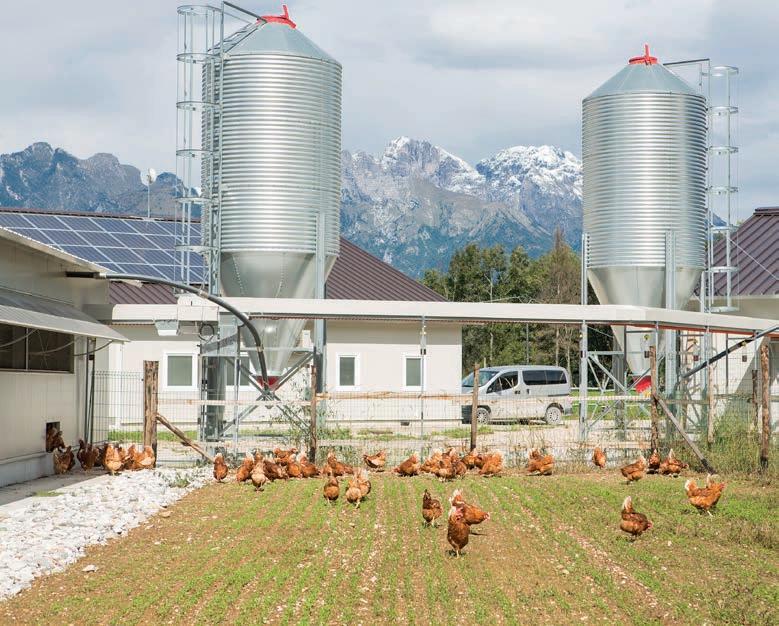
missibility, as well as egg contamination.
A high prevalence of Campylobacter spp. has been detected in both intensive and extensive hen housing systems. Jones et al. (2015, 2016) compared Campylobacter detection in conventional cage, enriched colony cage, and multi-tier cage-free aviary housing and found scratch pads, system wires, and flooring substrate to be environmental reservoirs. Listeria monocytogenes is an important foodborne pathogen, known to proliferate in refrigerated conditions. Listeria has been detected in the shell egg and egg products processing environment but information as to on-farm incidence or impact of housing systems on Listeria prevalence is limited. When hens have outdoor access (such as organic or
free range), the environmental and egg flora are impacted. Mislaid eggs are defined as those which cannot be effectively, efficiently, or hygienically collected. These are often referred to as floor eggs, but may not always occur on the floor of an extensive housing system. Research has found that mislaid eggs have a higher likelihood of microbial contamination. Research has also found that cage-free systems, in particular cage-free aviaries, result in high levels of dust from hens foraging and dust bathing in the substrate. The increase in dust impacts egg safety and worker health.
Conclusions
Maintaining and enhancing shell egg quality requires a holistic approach to egg production, handling, transportation, and distribution. Much is known about conserving egg quality associated with conventional cage production systems. As world egg production shifts to a variety of extensive housing systems for laying hens, as well as changes in dietary formulations and laying hen genetic stocks, controlling egg quality can be challenging. It can be daunting to process the information or lack of information to make informed decisions.
Producers do not have to face these challenges alone. Reach out to the multitude of resources available and in today’s virtual environment, it is even easier to receive assistance from anywhere in the world.
References are available on request
From the Proceedings of the APSS 2022
24 DOSSIER - dossier -






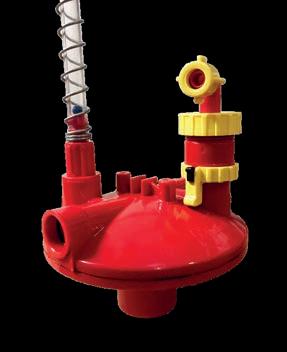
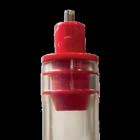

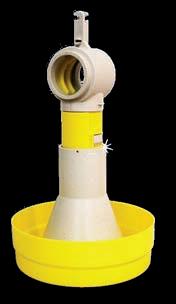

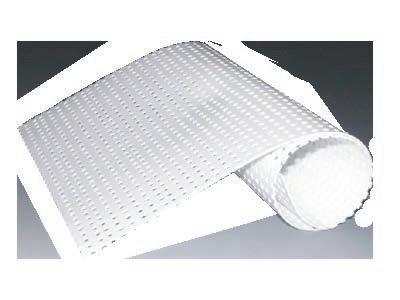




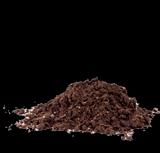

INFINITY 4006 H • 360 degrees opening • Highly strong and durable material • “SOFT” action 4002 H 4626 • Suitable for fattening turkeys • Perfectly dry bedding • Simultaneous watering of 2 and more animals 4901 N Pressure regulator with bypass • Essential design • No chicks in the pan! • Regulation of minimun and maximum feed level • Available in caged broilers version • 360 degrees opening • Highly strong and durable material • “EXTRASOFT” action for breeding ARTICLES ACCESSORIES CORTI ZOOTECNICI • Egg collection • Manure drying system • Manure belt collection • PP woven egg belts • PP hole egg belts PP Belts Corti Zootecnici Srl | Via Volta, 4 21020 Monvalle (VA) Italy| www.cortizootecnici.it |
Dynamics and patterns of the poultry industry in the G19 countries between 2010 and 2020
Part 2 – Egg trade
The G20 (Group of Twenty) was founded in 1999 in Berlin as a forum of 19 individual member countries and the EU1. It substituted the former G8 group. The main goal of the forum is to undertake means, which contributes to the stability of the global financial situation. In this report, 19 instead of 20 countries will be analysed. The EU will be omitted as four member countries are among the G19.
Dynamics and patterns of egg exports by the G19 countries
In contrast to meat, which can be frozen, shell eggs can only be chilled. Because of the comparatively short shelf life, they are in most cases shipped over only short distances. Eggs are mainly produced for domestic consumption. The share of the traded volume in production is very low. In 2020, only 2.4% of the produced eggs reached the global market. Nevertheless, egg exports respectively imports are of considerable economic importance for some countries.

Global egg exports grew by 255,500 t or 14.0%; exports by the G19 countries increased by 84,400 t or 13.2% (Table 1). Their share in the absolute global growth was 33.2%. Obviously, several G19 countries were not only able to intensify their production but also to generate a surplus over demand, which they could export.
The author is Prof. Emeritus of the University of Vechta and visiting Professor at the Hannover Veterinary University, Germany
In 2020, the G19 countries contributed 70.5% to the global laying hen inventory and 74.3% to global egg production. Their share in global egg trade was much lower with 34.9% in the global export and 33.8% in the global import volume. A first paper documented the spatial patterns of egg production at country level (Zootecnica International 10/2022). This paper will deal with the dynamics and patterns of egg trade between 2010 and 2020.
A closer look at the changes in the ranking and the export volumes reveals some remarkable dynamics. Turkey remained the leading exporting country and in 2020 shared 10.5% in the global export volume. Germany was replaced by the USA in second place, China lost one rank and 2.0% of its former share, France 1.5% and Germany 0.6%. In contrast, Turkey gained 3.3% and the USA 3.0%. It is surprising at first glance that Germany with a self-sufficiency
1 Member countries are Argentina, Australia, Brazil, Canada, China, France, Germany, India, Indonesia, Italy, Japan, the Republic of Korea, Mexico, the Russian Federation, Saudi Arabia, South Africa, Turkey, the United Kingdom, the United States and the European Union.
26 MARKETING - marketing -
Hans-Wilhelm Windhorst
of less than 70% exported 118,400 t of shell eggs. This is due to the fact that several Dutch farmers own egg farms in Eastern Germany from which they ship shell eggs to the Netherlands. From there they are either exported or further processed. These eggs are counted as exports from Germany and imports into the Netherlands.

Table 2 lists the G19 countries according to the absolute change of their egg
2.2% 2.5% 2.5% 4.1% 4.6%
Total: 0,726 mill. t G19 Total: 2,081 mill. t World 3.7% 2.1%
Figure 1 – The share of the ten leading G19 countries in global and G19 egg exports in 2020 (design: A.S. Kauer based on FAO data). 193,800 t. China, France, India and Italy reduced their exports considerably. China and India exported less eggs because of the fast increase of the per capita consumption and a rising domestic demand. Declining laying hen inventories in France and Italy explain the re-
27 - november 2022MARKETING
10.0% 16.3% 22.0% 30.0% Turkey USA Germany China France Russia Japan Un. Kingd. India Italy Others 66.2% 0.8% 0.8% 0.9% 0.9% 1.4% 1.6% 3.5% 5.7% 7.7% 10.5%
Barbieri srl Via Garibaldi, 54 • 26040 Scandolara Ravara (CR) Italy Tel. (+39) 0375 / 95135 • Fax (+39) 0375 / 95169 • Manu re re moval belt s • Manu re belt wi th hole s for dr yi ng system s info@barbieri-belts.com www.barbieribelts.com BELTS and ROP ES for AV ICULTURAL USE BE LT S
Table 1 – The development of egg exports by the G19 countries between 2010 and 2020 and their share in the global export volume; data in 1,000 t (source: FAO database).
2010 2020
Country Exports Share (%) Country Exports Share (%)
Turkey Germany China USA France S. Arabia India Italy Brazil Russia Un. Kingdom South Africa Mexico Canada Argentina Japan Korea, Rep. Australia Indonesia
131.6 115.1 100.2 86.1 57.0 41.2 34.9 27.7 13.9 12.9 6.8 5.7 2.8 2.6 1.1 0.9 0.4 < 0.1 < 0.1
7.2 6.3 5.5 4.7 3.1 2.3 1.9 1.5 0.8 0.7 0.4 0.3 0.2 0.1 0.1 < 0.1 < 0.1 < 0.1 < 0.1
Turkey USA Germany China France Russia Japan Un. Kingdom India Italy Brazil South Africa Korea, Rep. S. Arabia Canada Australia Indonesia Argentina Mexico
217.9 159.3 118.4 72.9 33.3 30.0 18.1 18.0 16.1 15.6 12.8 11.0 1.6 0.4 0.2 0.2 < 0.1 0 0
10.5 7.7 5.7 3.5 1.6 1.4 0.9 0.9 0.8 0.8 0.6 0.5 0.1 < 0.1 < 0.1 < 0.1 < 0.1 0 0
G19 640.9 35.1 G19 725.8 35.9 World 1,826.4 100.0 World 2,081.9 100.0
duction of their export volumes. The relative changes fluctuated between 1,911.1% for Japan and -53.9% for India. The growth rates for Turkey reflect the rapid growth of egg production and a high surplus over demand (see Table 5). Figure 1 shows the remarkably high regional concentration in the G19 egg exports. The ten leading countries shared 96.3% in the overall export volume, the leading four 78.3%.
Dynamics and patterns of egg imports by the G19 countries
Egg imports of the G19 countries grew slower than global imports. Global egg imports increased by 468,000 t in the past decade and reached a volume of 2.1 mill. t in
2020, which equals a relative growth of 27.9%. Egg imports of the G19 countries increased by 57,500 t or 8.6%. To the global growth, the G19 countries contributed only 12.3% (Table 3). This indicates that the egg trade of countries, which not belonged to the group of G19, showed a considerably higher dynamics.
A comparison of the ranking of the G19 countries in 2010 and 2020 shows some interesting changes (Table 4). While Germany remained in the top position, despite losing 10.9% of its former share, Russia stepped up three places. Saudi Arabia and Mexico also climbed upward in the ranking while France, Italy, the United Kingdom and the USA fell to lower ranks. In 2020, eight of the G19 countries shared either less than 0.1% in the global import
volume or did not import shell eggs at all. The regional concentration in egg imports was even higher than in exports. Figure 2 shows that the ten leading G19 countries shared 99.7% in the overall import volume, the leading two 63.6%, Germany alone 52.7%.
Table 2 – The G19 countries with the highest increase respectively decrease of egg exports between 2010 and 2020; data in 1,000 t (source: FAO database; own calculations).
Country Exports Change (%)
Turkey USA Japan Russia Un. Kingd. S. Africa Germany Korea, Rep. Brazil Italy India France China
86.3 73.2 17.2 17.1 11.2 5.3 3.3 1.2 - 1.1 - 12.1 - 18.8 - 23.7 - 27.3
65.6 85.0 1,911.1 132.6 164.7 92.9 2.9 300.0 - 7.9 - 43.7 - 53.9 - 41.6 - 27.2
G19 84.4 13.2 World 255.5 14.0
In Table 4, the G19 countries are listed according to their absolute change in egg imports. Ten countries imported more eggs in 2020 than in 2010; eight countries either reduced their imports or did not import eggs.
Only Argentina did not import eggs in 2010 and 2020. The highest import increase showed Russia, followed by Saudi Arabia and Mexico. Germany, the leading egg importing country, reduced its imports by 99,100 t despite a rising per capita consumption. This was possible because of the fast increase in the laying hen inventory by 14 mill.
28 MARKETING - marketing -
Table 3 – The development of egg imports by the G19 countries between 2010 and 2020 and their share in the global import volume; data in 1,000 t (source: FAO database).
2010 2020
Country Imports Share (%) Country Imports Share (%)
food industry due to the massive losses of laying hens during the AI outbreaks in 2015.
Germany France Italy United Kingdom Canada Russia Mexico USA Saudi Arabia Turkey Australia Japan Korea, Rep. China India Brazil Indonesia South Africa Argentina
481.5 54.2 39.9 36.1 24.9 16.7 7.3 3.4 2.0 0.8 0.8 0.8 0.5 0.2 0.1 0.1 < 0.1 < 0.1 < 0.1
28.7 3.2 2.4 2.2 1.5 1.0 0.4 0.2 0.1 < 0.1 < 0.1 < 0.1 < 0.1 < 0.1 < 0.1 < 0.1 < 0.1 < 0.1 < 0.1
382.4 79.4 57.4 53.9 44.5 42.2 29.7 27.0 3.7 2.2 1.6 0.7 0.5 0.2 0.2 < 0.1 < 0.1 0 n. d. G19
17.8 3.7 2.7 2.5 2.1 2.0 1.4 1.3 0.2 0.1 < 0.1 < 0.1 < 0.1 < 0.1 < 0.1 < 0.1 < 0.1 0 n. d.
669.3 39.9 G19 725.6 33.8 World 1,677.2 100.0 World 2,145.2
























































































































































































































































hens between 2010 and 2020. The Russian Federation, where the per capita consumption grew by more than 50 eggs in the past decade, had to increase their egg imports considerably. The higher imports of Mexico were a result of several AI
outbreaks, which resulted in an egg shortage. The import growth of Saudi Arabia was a result of a fast growing domestic demand. The USA was forced to import eggs because some egg processing companies were not able to fulfill their contracts with the



Only in two of the nine countries with decreasing imports, the reduction reached considerable amounts, the United Kingdom and Germany. In the United Kingdom, the growing production and a more or less stagnant per capita consumption made it possible to reduce the imports. In Germany, egg production increased by 28.9% between 2010 and 2020 due to higher layer inventories. A sharp reduction of the imports was the result.
Egg

trade balances of the G19 countries in 2020
Table 5 lists the egg trade balances of the G19 countries in 2020. Turkey, the USA and China had the highest trade surplus, followed by Japan, India, Brazil and South Africa. The highest trade deficit showed Germany, Saudi Arabia, Russia, Mexico, Canada, Italy and France.
Want to improve bird performance and reduce wet litter? Check impex nl for more information
29 - november 2022MARKETING
Germany Russia France Saudi Arabia Mexico Italy United Kingdom Canada USA Turkey Australia Japan Korea, Rep. Brazil South Africa India Argentina Indonesia China
100.0
The data in Table 5 documents that the regional concentration was very high in positive as well as in nega-
G19 0.3%
Total: 0,722 mill. t 52.7%
2.7% 3.7% 17.8% 0.3% 0.5% 3.7% 4.1% 6.1% 6.1% 7.4% 7.9% 10.9%
Germany Russia France S. Arabia Mexico Italy U.K. Canada USA Turkey Others
Figure 2 – The share of the ten leading G19 countries in global and G19 egg imports in 2020 (design: A.S. Kauer based on FAO data).
Deficit
Surplus
Turkey USA China Japan India France Italy Canada Mexico Russia S. Arabia Germany -264.0 -53.4 -49.4 -44.5 -26.8 -26.6 -24.1 16.0 17.4 72.9 155.6 215.7
-300-225-150 -75 0 75150225300
Deficit
Figure 3 – The egg trade balances of selected G19 countries in 2020; data in 1,000 t (design: A.S. Kauer based on FAO data; own calculations).
tive trade balances. A few countries either had a considerable surplus over demand and only a few countries had remarkably high deficits in their trade with shell eggs (Figure 3).
The data again documents that most countries produce eggs mainly for their domestic demand.
Summary and perspectives
The preceding analysis showed that the share of the G19 countries in global egg trade was much lower with about 33% in exports and in imports in comparison to production.
This reflects the ability of most G19 countries to meet the growing demand by intensifying their domestic egg production. Nevertheless, the trade balances with eggs for
The fast growing demand in parts in Western Asia may result in higher imports. On the other hand, the progress, which several countries of the G19 group made over the past decade by investing in efficient production systems, may enable them to raise their export volumes.
Table 4 – The absolute and relative change of the egg imports by the G19 countries between 2010 and 2020; data in 1,000 t (source: FAO database; own calculations).
Country Imports Change (%) Russia S. Arabia Mexico France Italy Canada S. Africa Turkey Australia USA Un. Kingd. Germany
375.4 2,595.0 409.8 5.9 5.8 8.4 39,900.0 175.0 92.7 8.9 - 17.8 - 20.6 G19 57.5 60.9 World 468.0 67.4
62.7 51.9 37.2 3.2 2.3 2.1 1.6 1.4 0.7 0.3 - 6.4 - 99.1
30 MARKETING - marketing -
Total: 2,145 mill. t World 66.2% 0.1% 0.2% 1.3% 1.4% 2.0% 2.1% 2.5%
single countries differed considerably between a high surplus and the necessity to import large amounts of eggs to meet the growing demand and high export volumes. It can be expected that the share of the G19 countries in global egg trade will further increase because of the remarkable dynamics in several countries, such as India, Indonesia, Brazil and Turkey.
Table 5 – Egg trade balances of the G19 countries in 2020; data in 1,000 t (source: FAO database; own calculations).
Country Balance
Turkey USA China Japan India Brazil S. Africa Korea, R. Argentina Indonesia Australia Un. Kingdom France Italy Canada Mexico Russia S. Arabia Germany
215.7 155.6 72.9 17.4 16.0 12.6 10.8 1.1 0 0 - 1.4 - 11.7 - 24.1 - 26.6 - 26.8 - 44.5 - 49.4 - 53.4 - 264.0

The data in Table 5 document that the regional concentration was very high in positive as well as in negative trade balances. A few countries either had a considerable surplus over demand and only a few countries had remarkably high deficits in their trade with shell eggs.
Data sources, references and suggestions for further reading
FAO database: http://www.fao.org/faostat G20: https://en.wikipedia.org/wiki/G20

Windhorst, H.-W.: Patterns and dynamics of the EU poultry industry: a status report. Part 1: Laying hen husbandry, egg production and egg trade. In: Zootecnica International 43 (2021), no. 12, p. 22-26.

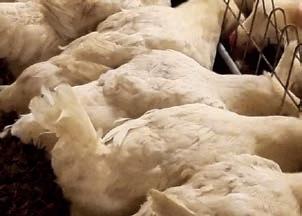


Windhorst, H.-W.: Pat terns and dynamics of global egg trade: the situation in 2020. In: Zootecnica International 44 (2022), no. 5, p. 14-17. Worldbank: https://data.worldbank.org/.
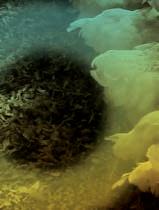
Durability and
feeding expert
Roxell
The new Fortena™ chain feeding system improves and speeds up the feed intake and reduces residual feed. This chain feeding system is part of our 360° portfolio for farm equipment with innovative feeding and drinking systems, nests, heating, ventilation and controllers.
31 - november 2022MARKETING
more at roxell.com
Discover
convenience
from the breeder
for
the
launches Fortena™ chain feeding system
broiler breeders in
production period
Gamie Gundran, Petersime Incubation Consultant
Hatching eggs: the importance of assessing internal egg quality

Hatching egg quality has a significant impact on hatchability and chick quality. By making egg quality control a part of the routine procedures in your hatchery, you will be able to improve your hatch results. Although it is fairly easy to evaluate external egg quality by checking the egg’s exterior, it can be more challenging to perform deeper checks on a regular basis. This article describes the most important interior quality factors to help you assess internal egg quality.
Why perform a deeper check?
A hatching egg is a protected space for the chicken embryo to develop in. Inside the egg are all the essential nutrients and mechanisms to support an optimal development and growth of the embryo. However, while the egg is formed in the reproductive tract of the hen, various events can occur that cause irregularities in eggs. Some of these irregularities affect the internal quality of the egg, which is why it is important to perform both external and internal
32 - technical columnTECHNICAL COLUMN
quality controls. An overview of the most important interior quality factors is given below.
1. Egg fertility
A first parameter is whether the egg has been fertilised or not. Hatching eggs can be analysed before incubation on arrival at the hatchery to distinguish fertile eggs from infertile eggs. This requires a specific technique that needs to be built up by practice. When applied, however, a disadvantage of the technique is the loss of valuable hatching eggs due to the destructive procedure. A fertile egg is characterised by a blastoderm that has a clearly defined ring-shaped appearance (seen as a white symmetrical ring with a clear area in the centre). If for whatever reason the egg is infertile, a blastodisc is visible with a ruffled, irregular shape. A blastodisc is also lighter in colour and smaller in size compared to a blastoderm (Figure 1). It is a well-known fact that the fertility goes down as flock age increases, but a sudden drop in fertility could be an indication of a breeder problem and a reason to perform deeper analysis.
2. Yolk quality
The yolk is an essential part of the hatching egg and constitutes an important food source for the developing embryo. The yolk’s condition can be investigated by performing a fresh egg breakout analysis. The yolk must be clear and not mottled (Figure 2). Mottled yolk is an indicator of stress at the breeder farm. Bad yolk increases the risk of early embryonic mortality during incubation.
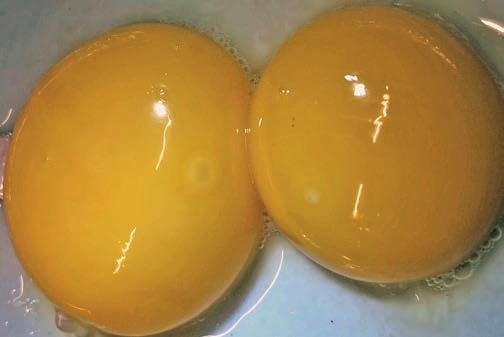
Having said that, it is important to ensure a correct handling and storage of hatching eggs, so good-quality embryos can remain in perfect condition. An embryo’s cell division begins from the moment the egg is fertilised. After point of lay, the blastoderm consists of approximately 60,000 cells. Inappropriate handling and storage at the breeder farm, during transportation or at the hatchery will dramatically reduce the chances of producing a healthy day-old chick from that same egg.
2
3. Albumen quality
The albumen (egg white) provides essential proteins for the developing embryo. It also protects the embryo from any bacteria that could get into the egg. The most common test for albumen quality - conducted during a fresh egg breakout analysis - was invented by Raymond Haugh. After weighing, an egg is broken onto a flat surface. A micrometer caliper is used to determine the height of the albumen surrounding the yolk. The height, correlated with the weight, determines the Haugh Unit. The higher the number, the better the albumen quality of the egg (Table 1).
Table 1 – Albumen quality of the egg. Calculated Haugh Unit Egg quality
and below

33 - november 2022TECHNICAL COLUMN
Figure 1 – A fertile egg with blastoderm on the left; an infertile egg with blastodisc on the right.
Figure
– An example of mottled yolk with cloud-like spots underneath the vitelline membrane.
90
80-89 Very
70-79 Fair 69
and above Excellent
good
Poor
4. Vitelline membrane strength
The vitelline membrane encloses the yolk and keeps it separate from the albumen. Keeping this protective membrane intact throughout embryo development in the egg is crucial to its survival. This membrane should not be wrinkled - characterised by small scratches on the membrane surrounding the yolk. If the vitelline membrane is damaged or broken, the yolk can mix with the albumen, ultimately leading to embryonic mortality (Figure 3).
5. Pathogen-free eggs


There are some important groups of pathogens that can be problematic: bacteria, Escherichia coli (E. coli ), Salmonella, Pseudomonas (Figure 4) and Aspergillus (Figure 5). They hinder the development of the embryo and can even destroy the egg during incubation. That is why it is extremely important that hatching eggs are free from pathogens.
Although it is impossible to check an egg for pathogens when it is fresh (unless a laboratory analysis is undertaken), their presence will be clearly revealed after hatch. The contamination level can vary between 0-0.5% for young to middle-aged flocks (25-35 weeks) and between 1-2% for flocks older than 36 weeks (depending on the breeder farm management). By conducting a post-hatch breakout analysis, the level of contamination can be determined.
A sudden increase in contamination characterised by exploders (‘bangers’) can indicate egg management issues either at the farm or at the hatchery. The hatchery breakout data sheet containing the accurate number of contaminated eggs is to be shared with the farm team and hatchery team to take appropriate action. Flocks with contamination records higher than 0.5% should get special attention with regard to egg handling and sanitation procedures.
In conclusion
It is necessary to evaluate internal egg quality on a routine basis. Ensuring that there are procedures in place to evaluate the internal quality of incoming hatching eggs will greatly assist in safeguarding the hatchery from quality issues.
If you want to know more about hatching egg quality, breakout analyses or other best practices for your hatchery, contact training@petersime.com
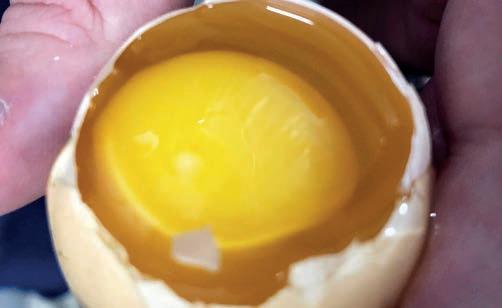
34 - technical columnTECHNICAL COLUMN
Figure 3 – An egg with a damaged vitelline membrane.
Figure 4 – An egg contaminated with Pseudomonas.
Figure 5 – An egg contaminated with Aspergillus.
The innovative rationing system
FOR BROILER BREEDERS
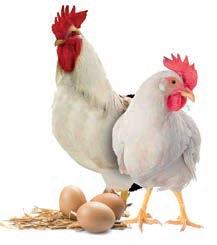


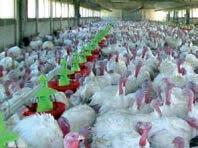

Linear trough feeder for breeders suitable for 300 meters long systems with one single motor and loading point throughout the circuit. Immediate and homogeneous feed distribution throughout the entire circuit.
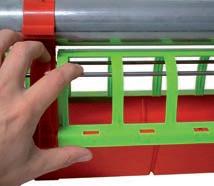
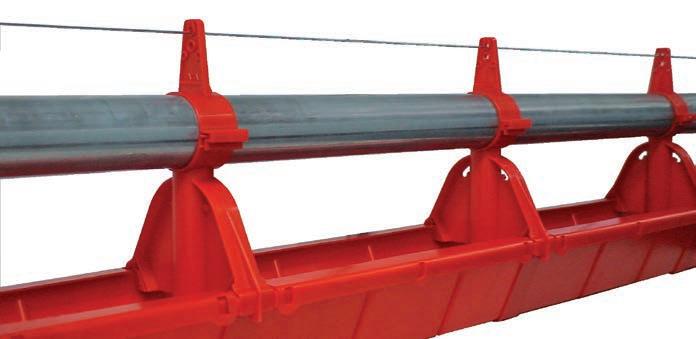
Easy cleaning and no residual feed inside the trough. Adjustable anti-cock grid.
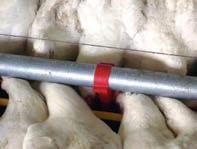
FOR LAYERS AND PULLETS
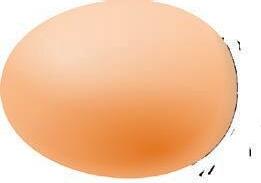
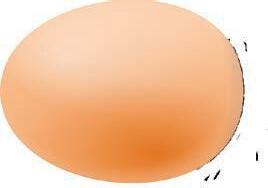
Linear trough feeder for layers and pullets.

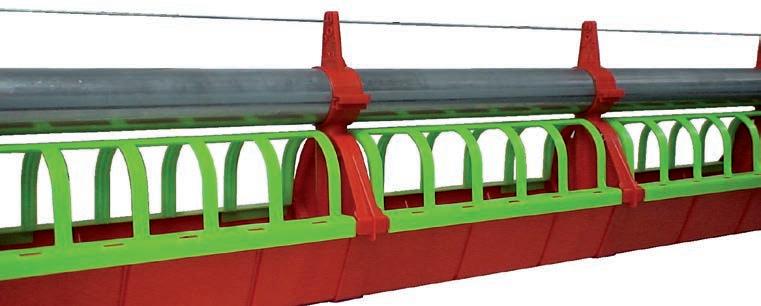
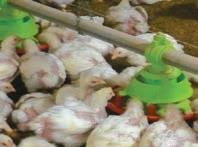
Manufactured from sturdy light plastic material for easy winching. The pullets’ version is equipped with a convenient midway drop designed for one day old chicks. Cage version also available.
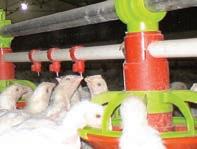
35 - november 2022TECHNICAL COLUMN Leader in pig & poultry equipment AZA INTERNATIONAL S.r.l. - www.azainternational.it Via Roma 29, 24030 Medolago (BG) Italy - Phone +39 035 901240 - info@azainternational.it • Broilers • Breeders • Cocks • Pullets • Layers • Turkeys • Quails • Ducks THE MOST INNOVATIVE RANGE FOR POULTRY FEEDING :
for
assuring high reliability and quality products at competitive prices. I WANT AZA!
AZA INTERNATIONAL has been working in the zootechnical sector
more than 50 years
BREEDAZA
Pullets’ version QUALITY MADE IN ITALY NEW!
In ovo injection of oregano essential oil at different pH affects hatchability and posthatching performance in broiler chickens
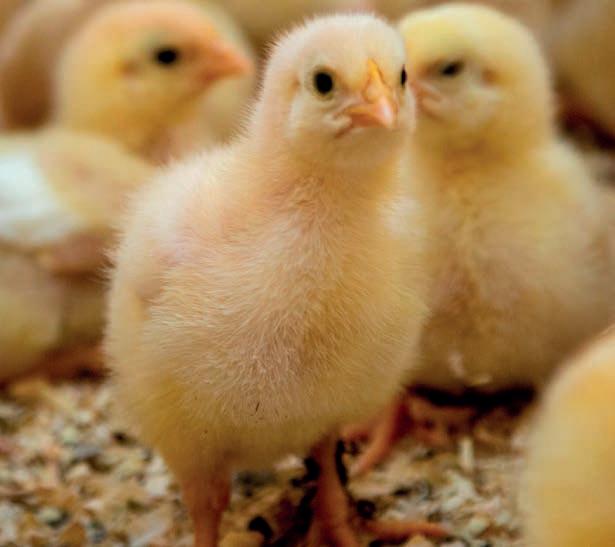
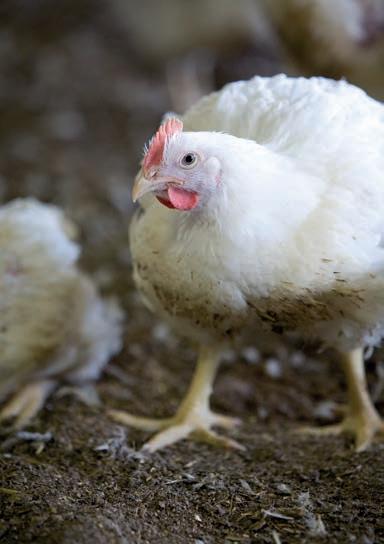
The dynamic complexity of the developing embryo requires the maintenance of differentiated compartments with the capacity to maintain independent environments required to optimise their function. One of the least understood homeostatic mechanisms in embryonic development relates to the pH.
The albumen’s pH at lay experiences a sharp increase to 9.7 which later decreases to 6.90 by day 17 (Tona et al., 2001). In contrast, the pH of yolk starts with a relatively low 6.67 at lay and increases with the embryonic development up to 8.05 at 15 d (Decuypere et al., 2001). This experiment aimed at testing the hypothesis that the in ovo injection of oregano essential oil (OEO) at a buffered neutral pH between 6.5 and 7.0 has the potential to improve the hatchability and the post-hatch performance in broiler chickens. The study included 720 eggs incubated using standard procedures.
T1-T2 were control groups consisting of 3 replicates of 20 eggs each non-injected (T1) or injected with a saline solution (T2) in the air-sac on day 17.5. T3-T8 consisted of 5 replicates of 20 eggs each injected 0.1ml OEO at different pH, in air sac on day 17.5. The concentration of OEO was 0.5%. The pH solution for T3 (pH=4.5) was adjusted using 0.1 mM citric acid, while for T4-T8 (pH of 5.5, 6.5, 7.5 and 8.5, respectively) 0.001M sodium hydroxide was used. At 21 d, 45 chicks from groups T1-T8 (3 replicates of 15 chicks/group) were transferred to brooders and reared for 7 days. Data was analysed
36 MANAGEMENT - management -
A.A. Khaskheli, S. Niknafs, M.M.Y. Meijer and E. Roura The University of Queensland, Australia
using PROC GLM of SAS 9.4. Significance level was set at P<0.05. The highest hatchability was observed for the 6.5 pH in T5 (95.7%) while T6 (pH 7.5) had the lowest (82.0%) (Table 1).
Table 1 – Influence of in ovo injection of oregano essential oil at different pHs on hatchability and post hatching performance in broiler chickens
ab means within each column with different letters are significantly different at P<0.05.

Injection of OEO with different pH into the air cell had no significant impact on post-hatch growth or feed intake (P>0.05). However, injection of OEO at a pH of 7.5, compared to the non-injected control group, significantly (P<0.05) reduced feed conversion ratio (FCR) (1.114 vs 1.558). Improvement in FCR might be related to positive influence of OEO on chickens’ health, so they efficiently utilized the feed. In conclusion, changes in the pH of OEO injected in ovo may influence hatchability and FCR post-hatch in broiler chickens.
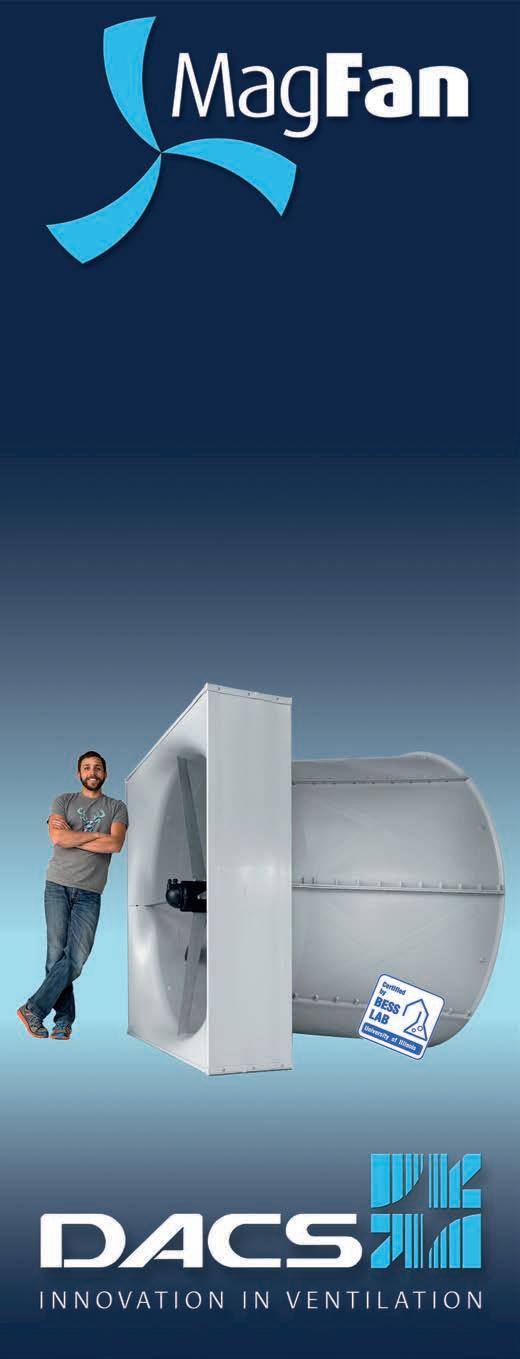
Acknowledgements: Study was supported by AgriFutures Chicken Meat Program.
References
Decuypere E., Tona K., Bruggeman V. & Bamelis F. (2001) World’s Poult. Sci. J. 57: 127-138. Tona K., Bamelis F., De Ketelaere B., Bruggeman V., Moraes V.M., Buyse J. & Decuypere E. (2003) Poult. Sci. 82: 736-741.
37 - november 2022MANAGEMENT
Treatments Hatchability (%) BW0 (g) BW7 (g) Feed intake (g) FCR
T1(control) 89.6 44.6 167.3 188.8 1.558a T2(saline) 90.6 44.7 183.4 163.3 1.183ab T3(oregano pH 4.5) 92.7 44.0 182.5 169.8 1.225ab T4(oregano pH 5.5) 91.8 45.3 182.4 180.1 1.318ab T5(oregano pH 6.5) 95.7 44.9 187.2 183.7 1.291ab T6(oregano pH 7.5) 82.0 44.3 184.9 156.3 1.114b T7(oregano pH 8.5) 89.5 44.2 181.5 163.1 1.188ab T8(oregano pH 9.5) 91.9 44.5 188.4 180.6 1.256ab SEM - 0.51 6.4 9.3 0.09 P values - 0.6167 0.4494 0.2123 0.0343
Poultry processing ergonomics
No matter the degree of automation of any given poultry processing plant! There will always be a need for laborers, yet just a few ones, somewhere along the line. Therefore, the consideration for the work ergonomics becomes imperative as to guarantee the workers’ physical integrity and health.

tasks requiring different intensity of struggle and is characterizes by high production rates.
Therefore, industry jobs involve one or more of the following circumstances: working more than 8 hours a day; increasing specialization leading workers to perform only one function or movement for a long period of time or day after day; quick working pace at killing or deboning line, for example, and having tighter grips when performing cutting and boning tasks. According to USA’s OSHA - Organizational Safety and Health Agency, these factors, especially if coupled with poor machine, workplace and tool design create physical stress on workers’ bodies that can lead to MSDs.
What is ergonomics and why is it important in a poultry processing plant? Ergonomics is the science of adapting workplace conditions to fit the worker’s body as to reduce the stress associated with the overuse of muscles, bad posture and repeated tasks, therefore eliminating many potentially serious, disabling work-related musculoskeletal disorders (MSDs).
Fabio G. Nunes Poultry Processing Consultant, Brazil fabio.g.nunes@hotmail.com
“In management, the first concern of the company is the happiness of people connected with it. If the people do not feel happy and cannot be made happy, that company does not deserve to exist”
Kaoru Ishikawa, July 13, 1915 - April 16, 1989
MSDs are injuries that can affect nearly all body’s soft tissues and nervous system, as well. These painful and often disabling injuries generally develop gradually over time and most frequently effects arms and back. MSDs affect over 1.7 billion people worldwide and have the fourth greatest impact on the overall health of the world population, considering both death and disability.
The work ergonomics acquires great importance within the global poultry industry as it is a very labor-intensive business, which demand a large array of manually performed
Workplace hazards
Workplace hazards that most contribute to ergonomic injuries include awkward postures, repetition, material handling, force, mechanical compression, vibration, temperature extremes, glare, inadequate lighting, and duration of exposure. The article will address just four of them.
Repetition
In a poultry plant nearly all tasks are very repetitive with overall cadence driven by the killing line speed. Good examples are live hanging, edible giblets collection, re-hanging out of chiller, insertion of giblets package into whole carcasses cavity and the many hand cutting and deboning operations;
Extended reaching Tasks that demand elevated and long reach-
38 - processingPROCESSING
Eng.
©aitas.kz
es stress shoulders, elbows and back, and can produce ergonomic injuries. A few good examples of extended reaching in the plant are: hanging live birds or carcasses onto an elevated shackle line at reception out of chiller and onto the cutup line; manual inspection of inside the carcasses hanging on elevated conveyors; stacking and de-stacking live broilers crates at farm and plant; piling products boxes onto trucks for shipment, and collecting products from a conveyor that is too wide are.
Heavy lifting
At farm, live catching by the legs demand each worker lifts 3 or even 4 birds of 2.5 kg per hand at a time with tenths of repetitions per hour. Stacking of crates with live chickens onto trucks require the lifting of units weighing 25 kg or more above the head tenths of time per hour, as well. At plant, when crates unloading is manual, workers must pull 9 crates-high stacks out of the truck, drag them to the hanging station and de-stacking them manually for hanging; workers commonly hang in between 800 and 1,000 bph requiring a range of 13 and 17 movements per minute to lift from 1,600 kg to 2,500 kg per hour. Inplant logistics usually requires moving heavy totes, piles of boxes and heavy cart around manually, and workers must manually load packed boxes of product onto pallets and move loaded pallets.
Awkward posture
Awkward postures are deviations of body parts from their natural position. Working in these postures contributes to MSDs development. Working with wrists in a bent rather than straight position, and especially where the task also involves high hand force, can result in ergonomic injuries over time. Examples of wrist awkward positions are found in the inspection of body cavities to remove missed material; in the use of in-line knives which often forces employees to bend their wrists to exert the finger and hand force necessary to hold and control the knife, and boning tasks that force employees to bend their wrists 30-40 degrees, especially when working on a horizontal surface. Poultry companies must place ergonomics as a top priority and consider implementing programs to overcome or mitigate the risks to workers’ health associated with the work hazards.
OSHA suggests such a program must contain three primary sections - (I) a discussion of the importance of management commitment and employee involvement, (II) recommended program elements and (III) essential,
detailed guidance and examples for the program elements - and embrace five elements:
1. Plant floor analysis: aims at identifying existing conditions, operations and work methods that create hazards, and areas where hazards may develop over time.
2. Hazard prevention and control: once ergonomic hazards are identified, the next step is to design a set of single or multiple measures to prevent or control them.
3. Medical management: it is necessary to eliminate and materially reduce the risk of development of illnesses signs and symptoms through early identification and treatment, and to prevent future problems through development of information sources.
4. Training and education: aims at ensuring that employees are sufficiently informed about the ergonomic hazards to which they may be exposed to and thus are able to participate actively in their own protection.
5. Outcome evaluation: procedures for evaluation of the ergonomics process and to monitor progresses are central to continuous improvement and long-term success of the program.
The rewards from the implementation of an effective ergonomics program throughout the plant are improved worker safety, comfort and morale. A clear proof that prevention pays off!
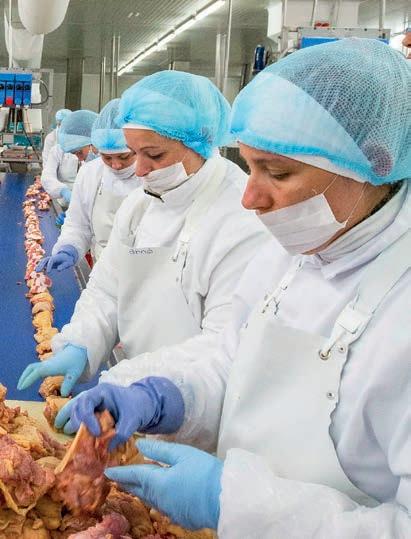
39 - november 2022PROCESSING
Literature available from author upon request
Shijinaraj Manjankattil BVScAH, MS, Claire Peichel MS, Divek V. T. Nair BVScAH, MS, PhD, Grace Dewi MS, and Anup Kollanoor Johny BVScAH, MVSc, PhD Department of Animal Science, University of Minnesota Twin Cities
Plant-based antimicrobials against Salmonella in turkey processing
Salmonella is a major foodborne pathogen causing significant disease and economic burden in the United States. A recent report on the source attribution of Salmonella using multiyear outbreak surveillance data shows that more than 75% of foodborne illness is attributed to seven categories of food, with a higher contribution from chicken, turkey, and eggs. In addition, analysis of the trends of past Salmonella outbreaks associated with poultry products indicates the emergence of serotypes with resistance to multiple clinically relevant antibiotics.
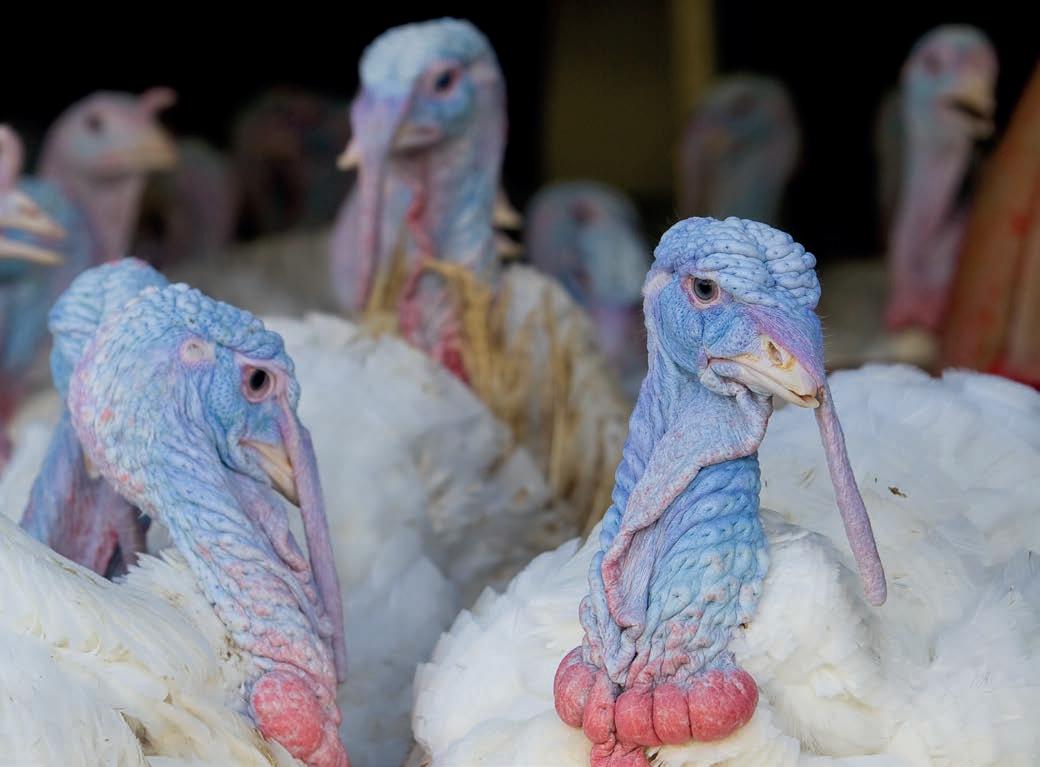
40 - processingPROCESSING
Diversity of Salmonella serotypes
Several Salmonella serotypes have acquired efficient mechanisms to attach and survive on complex foods like poultry meat, resulting in significant challenges to pathogen control. Moreover, some Salmonella serotypes have high survival capacity in various environmental conditions adding to the complexity of control approaches. Furthermore, the recent decade witnessed several outbreaks related to poultry meat and meat products, including turkeys, with serotypes like Salmonella enterica Heidelberg, Salmonella enterica Typhimurium, Salmonella enterica Enteritidis, Salmonella enterica Reading, Salmonella enterica Heidelberg, Salmonella enterica Schwarzengrund, and Salmonella enterica Hadar. Adding to the list, Salmonella enterica Agona and Salmonella enterica Saintpaul were present from several samples of ground meat, legs, and meat cuts, manifesting as serotypes of concern. The presence of multiple Salmonella serotypes on poultry meat and their unique evolutionary advancement must be considered while choosing appropriate postharvest interventions at the processing facilities.
Postharvest interventions
Salmonella attached to the carcasses and present in the fecal matter serves as a source of cross-contamination during poultry processing. The contamination can occur at any processing stage, starting from transporting flocks to the slaughterhouse until the final product is packaged. Even though scalding temperature, quality water, airflow, good processing practices, and water pH lower the Salmonella load on the carcass to a certain extent, appropriate interventions applied at various processing points can ensure a better microbiologically safe product. Based on the USDA FSIS guidelines, interventions focusing against Salmonella can be broadly classified as chemical, biological, and physical methods. Chemical interventions include chlorine, acidified sodium chlorite, trisodium phosphate, organic acids and oxidizers, and quaternary ammonium compounds. The use of bacteriophage targeting Salmonella can be a unique biological intervention. Electrolyzed oxidizing water, high-pressure pasteurization, and ionizing radiation are USDA-recommended physical interventions against Salmonella. The presence of organic matter, pH range, and high cost associated with infrastructure and maintenance are the major drawbacks to applying some of these interven-
tions. Plant-based antimicrobials can be viable options to address the setbacks with the currently approved interventions since they could maintain their activity at a wide range of pH, organic content, and temperatures. This article discusses the outcomes of essential oil research in turkey processing and their potential implications for the industry’s future.
Essential oils as postharvest interventions
The application of essential oils at different stages of poultry processing has been actively investigated in the past few years. As with other chemical interventions, essential oils can be tested for spraying or dipping applications. Most of the essential oil-based studies revolve around dipping at scalding and chilling stages, given that dipping provides more contact area and prolonged duration of action of essential oils or their ingredients. Recently, the efficacy of three essential oils, namely, eugenol, carvacrol, and beta resorcylic acid, against Salmonella enterica Heidelberg and Salmonella enterica Enteritidis were compared with that of chlorine and peracetic acid, two USDA recommended antimicrobials in the poultry processing, at both scalding and chilling conditions on chicken wings. The study demonstrated that each tested essential oil reduced Salmonella counts in combination with peracetic acid, with carvacrol showing overall best results at scalding and chilling conditions. An extensive study using carvacrol against Salmonella enterica Enteritidis on organic chicken carcass resulted in significant reductions at chilling temperature, more than twice the reduction obtained with 200 ppm peracetic acid under similar conditions.
Our previous studies using a combination of 1% trans-cinnamaldehyde with 500 ppm peracetic acid in scalding conditions resulted in more than 2 log10 CFU/g reductions of Salmonella enterica Heidelberg on chicken drumsticks along with a complete reduction in scalding water. Similarly, a study using 2% lemongrass essential oil against Salmonella enterica Heidelberg on chicken skin resulted in nearly 4 and 2.5 log10 CFU/sample reductions in scalding and chilling conditions, respectively. Studies on plant-derived antimicrobials like lemongrass essential oil or trans cinnamaldehyde as a direct additive in ground turkey meat resulted in more than 2.5 log10 CFU/g reductions of Salmonella enterica Heidelberg after a storage period of 7 days at 4 °C. In the context of these results from our lab, our next aim was to identify and study es-
41 - november 2022PROCESSING
sential oils with multiple active antimicrobial components for their efficacy against Salmonella at different processing stages.
Pimenta essential oil
Pimenta essential oil is the source of several beneficial plant-derived antimicrobial compounds obtained from the pimenta tree, belonging to the Myrtaceae family. This oil, also known as allspice oil, is approved as a generally recognized as safe (GRAS)-status compound by the FDA. Eugenol, β myrcene, and Ε caryophyllene are three major antimicrobial components extracted from different parts of this plant. It showed antibacterial activity against a broad spectrum of pathogens, including Staphylococcus aureus, Escherichia coli, Bacillus subtilis, Salmonella enterica, Streptococcus, Candida, Pseudomonas aeruginosa, Acinetobacter baumannii, and Enterococ -
cus faecalis. The presence of phenolic compounds and flavonoids in pimenta essential oil could also contribute to its antioxidant properties.
Published reports from our lab indicate that pimenta essential oil and its nanoemulsion can be used against multidrug-resistant Salmonella enterica Heidelberg. This study tested the compound as both scalding and chilling tank additives against Salmonella enterica Heidelberg on turkey skin. Three different concentrations of pimenta essential oil were tested at 3 time points and found that the antibacterial effect was concentration and time-dependent.
Approximately 2 log10 CFU/inch2 reductions of Salmonella were obtained when pimenta essential oil was used as a scald additive, whereas 2.4 log10 CFU/inch2 reductions were obtained in chilling water for 5 minutes. In the same study, the reduction was maintained for 48 hours under storage at 4 °C. It was also found that pimenta nanoemulsion resulted in a comparable decrease in Salmonella enterica Heidelberg populations on turkey skin as with pimenta essential oil treatments.
A study determining the efficacy of pimenta essential oil against Salmonella enterica Reading showed promising effects for both direct and indirect applications in turkey processing. In the direct application study, 0.25% of pimenta essential oil was directly added into ground turkey inoculated with Salmonella enterica Reading at two different inoculation doses. In both these studies, pimenta essential oil at 0.25% reduced more than 2 log10 CFU/g at day 0 and further maintained the reduction at a storage temperature of 4 °C until day 7. Adding 0.25% of pimenta essential oil in water kept at 4 °C as a post-chill dip for 30 seconds before grinding caused a reduction of approximately 2 log10 CFU/g Salmonella enterica Reading in ground turkey compared to controls. Similarly, a recent study from our lab found that 2% pimenta essential oil can be used as a direct additive to obtain significant reductions of Salmonella enterica Agona and Salmonella enterica Saintpaul in ground turkey meat. When tested as an antimicrobial additive for chilling purposes, the essential oil significantly reduced Salmonella recovery, comparable with peracetic acid. It was also noted that a decrease of approximately 1.5 and 3.5 log10 CFU/sample of the cominations of Salmonella enterica Agona and Salmonella enterica Saintpaul on meat and skin were obtained when dipped in chilling water containing both 2.5% pimenta essential oil and 500 ppm peracetic acid.
42 - processingPROCESSING
“Plant options present unique opportunities to explore active components present in the essential oils with multiple mechanisms of action, reducing the chances of the development of resistance in bacteria”
Neither the direct nor the indirect application of pimenta essential oil affected the color, pH, or chemical attributes such as the oxidative stability of turkey meat over 7 days of storage at chilling conditions.
The mechanism of action of pimenta essential oil is not reported yet. However, like other known essential oils, it can cause damage to the cell membrane and its ATP machinery and thus cell death. Moreover, the primary component of pimenta essential oil, eugenol, was proven to downregulate pathogenic genes of Salmonella enterica Enteritidis.
Conclusion
The diversity of Salmonella serovars and the emergence of some of them as causative agents of foodborne out breaks have demanded research into developing inno vative interventions such as plant-based antimicrobials. Plant options present unique opportunities to explore active components present in the essential oils with multiple mechanisms of action, reducing the chances of the development of resistance in bacteria. Our lab has been conducting extensive research on the efficacy of pimenta essential oil and other essential oils against dif ferent Salmonella serotypes, including outbreak strains of emerging serovars associated with turkey production and processing. The outcomes summarized in this arti cle suggest consideration of essential oils for postharvest safety of turkey products, improving the industry’s sustainability. We are scaling up the studies in processing plants before recommending their usage.
Acknowledgment
The authors would like to acknowledge the MnDRIVE GFV graduate fellowship 2020- 2021; Minnesota Department of Agriculture Grant #81824 FY20-21; the USDA National Needs Fellowship (#2016-38420-25285); Minnesota Agricultural Experimentation Station Project # MIN-16-120, and USDA NIFA OREI Project #2017-5130026815 for supporting the graduate training and research reported in this document.
References are available on request
From the Proceedings of the Midwest Poultry Federation Convention 2022
KEEP
UP
industry with
ON TRENDS AND CHALLENGES of poultry
It’s been 50 years since Zootecnica International started serving the poultry industry and professionals. Today the magazine is edited in three languages (English, Italian and Russian) and delivered monthly in 120 countries, reaching around 30.000 readers all over the world.

The target of Zootecnica International includes farmers, egg producers, breeding companies, hatcheries, feed mills, poultry and egg processing companies.
Magazine and website offer a broad overview on the poultry industry, providing in-depth news on international markets, business management, trends and practices in poultry, genetics, incubation, nutrition, veterinary and management.
zootecnicainternational.com
43 - november 2022PROCESSING
World leader in incubators & complete hatchery solutions


www.petersime.com
Incubators for all types of eggs. Specialists for partridges, pheasants and ostriches.

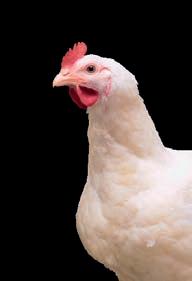
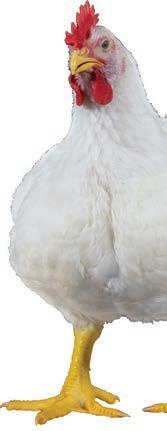
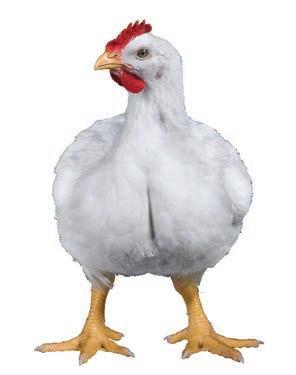





Via Bancora e Rimoldi 3 – 22070 Guanzate (COMO), Italy 39-031.352.91.22 – 031.352.91.29 - Fax: 39-031.352.95.91 victoria@victoria-srl.com
Automatic and digital incubators from 18 to 10.000 eggs of capacity




Via G.Galilei 3 – 22070 Guanzate (COMO), Italy - Fax: +39-031.899.163 E-mail: fiem@fiem.it


INCUBATORS SPECIALIST SINCE 1924
aviagen.com Great Achievements, Great Numbers 2020 - Arbor Acres Zootecnica Magazine Market Guide Ad - ENGLISH.indd 1 2/10/20 1:38 PM Reliable Breeder, Resilient Broiler aviagen.com aviagen.com ROSS 308 DELIVERS Ross Zootecnica Magazine Market Guide Ad - ENGLISH.indd2/10/201 1:34 PM info@cobbvantress.com The Chicken Experts. aviagen.com zootecnicainternational.com Breeders Hatcheries
www.agritech.it – e-mail: commerce@agritech.it

Leader in pig & poultry equipment
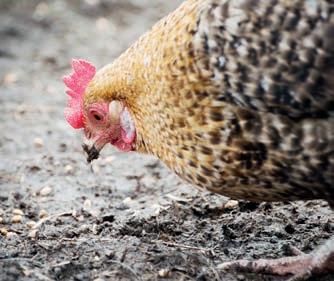
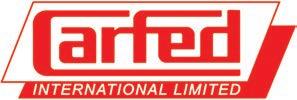



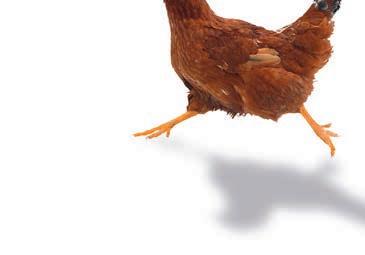

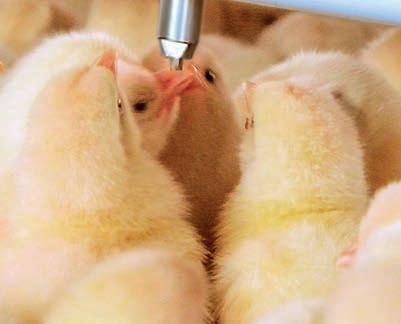


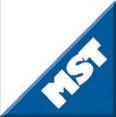
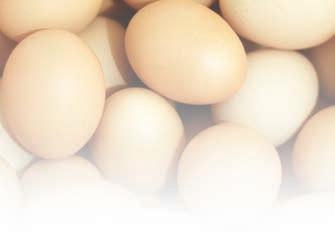
Via Roma 29, 24030 Medolago (BG) Italy - Phone +39 035 901240 Fax +39 035 902757 info@azainternational.it www.azainternational.it
9DF, England, UK Тel.: + 44. 20. 7660.0987- Email: carfed@carfed.co.uk
Sanitation Worldwide The key to superior egg sanitation • Watering & Feeding Systems • Poultry Accessories • Industry Breeding • Manure & Egg Belts Corti Zootecnici Srl | Via Volta 4, Monvalle (VA)
Italy| Tel.
info@cortizootecnici.com
Poultry Equipment Manufacturers
www.bigdutchman.de The No. 1 worldwide POULTRY EQUIPMENT BD Ad Zootecnica 55x95 10-13.indd 1 22.10.13 14:24 CARFED INTERNATIONAL LTD
headquarters: Piazza Oberdan, 3, 20129 Milano (Italy) Italian warehouse: Via Basilicata, 10, 20098 San Giuliano Milanese (Italy) Tel.: +39 02 9881140 - Fax: +39 02 98280274 Email: carfed@carfed.it - Website: www.carfed.it UK headquarters: Ground Floor, One George Yard, London EC3V
www.MSTegg.com info@MSTegg.com +44 (0)1536 516778 (UK) +1 423-881-3882 (USA) Egg
-
+39 0332 799985 |
CODAF
Via Cavour, 74/76 • 25010 Isorella (Brescia), ITALY Tel. +39 030 9958156 • Fax: +39 030 9952810 info@codaf.net • www.codaf.net
Italian
THE MOST INNOVATIVE RANGE FOR POULTRY FEEDING TURNKEY PROJECTS POULTRY INTEGRATED PROJECTS POULTRY EQUIPMENT FOR BROILERS AND LAYERS AVIARY SYSTEMS Officine Facco & C. S.p.A. Via Venezia, 30 - Marsango (PD) Italy Tel. +39 049 9698111 - Fax +39 049 9630605 | www.facco.net - facco@facco.net spazio55x45-facco.indd 2 03/10/14 15:06 BELTS AND ROPES FOR AVICULTURAL US E Manure removal belts an d Manure belt with holes for drying system s Via Garibaldi, 54 – 26040 Scandolara Ravara (CR) Italy Tel. (+39) 0375/95135 • Fax. (+39) 0375/95169 info@barbieri-belts.com • www.barbieri-belts.com Equipment
POULTRY EQUIPMENT
MANUFACTURERS

VALLI spa • via Cimatti, 2 • 47010 Galeata (FC) • Italy T: +39 0543 975 311 • F: +39 0543 981 400 E: info@valli-italy.com • I: www.valli-italy.com
Housing equipment for breeders, layers and broilers.
www.vencomaticgroup.com
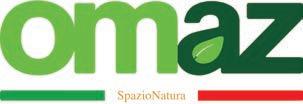



Drinking systems for chicks, broilers, breeders, layers, ducks, turkeys, rabbits and pigs
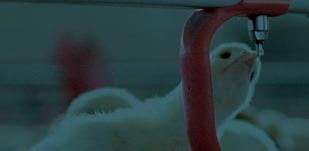





Conveyor systems for egg collection

Climate systems: Pad Climate (evaporative cooling for paper or plastic pads) and Top Climate (with high pressure nozzles)

GmbH & Co. KG
impex nl Let’s talk about water THE BEST FOR YOUR EGGS! via San Lorenzo, 9b 35010 Campo San Martino (PD), Italy
+39.049.9620774
- Email: info@flexy.it LUBING via Marco Polo, (Z.I.) Campodarsego, Padova Italy tel. + fax + info@lubing.it
SISTEM SRL lubingsystem.com
Dassendaler Weg 13 • D-47665 Sonsbeck (Germany) T: +49 (0) 2838 912-0 • F: +49 (0) 2838 2791 info@specht-tenelsen.de • www.specht-tenelsen.de
Ph:
Web: www.flexy.it
www.lubingsystem.com
Equipment
UPCOMING EVENTS
2022
November, 4 to 6
XXXVII Indian Poultry Science Association Conference
For information contact: Indian Poultry Science Association, Central Avian Research Institute, Izatnagar, Bareilly – 243122 (UP), India Tel.: +91-581-2303223, 2300204 (Extn. 3118) Mobile: +91-9758703488 Fax: + 91-0581–2301321 Email: drgau_vet@yahoo.com Website: www.ipsa-cari.org.in
November, 9 to 11
lLDEX Indonesia
Indonesia Convention Exhibition (ICE) Jakarta, Indonesia
For information contact: Panadda Kongma
Tel.: +662 111 6611 ext. 210 Email: panadda@vnuexhibitionsap.com Website: www.ildex-indonesia.com
November, 15 to 18 EuroTier
The world’s leading trade fair for animal farming Hanover, Germany
For information contact: DLG e.V. - Eschborner Landstr. 122, 60489 Frankfurt am Main Tel.: +49 69 24788-0 Fax: +49 69 24788-110 Website: www.eurotier.com
2023
January, 24 to 26
IPPE
International Production & Processing Expo
Georgia World Congress Center 285 Andrew Young International Blvd NW Atlanta, Georgia, USA
For information contact: U.S. Poultry & Egg Association 1530 Cooledge Road Tucker, GA, USA Tel.: +1 770 4939401 Fax: +1 770 4939257 Email: pstates@ippexpo.org Website: www.ippexpo.org
March, 8 to 10
VIV ASIA
International trade show from feed to food for Asia IMPACT Exhibition Center Bangkok, Thailand
For information contact: Worldwide VNU Exhibitions Europe Tel.: +31 (0) 30 295 2700 Fax: +31 (0) 30 295 2809 South East Asia VNU Exhibitions Asia Pacific Co., Ltd. 88 The PARQ, 4th Fl., West Wing Ratchadaphisek Rd., Khlong Toei, Bangkok 10110 Thailand Tel.: +662 111 6611 Email: viv@vnuasiapacific.com Website: vivasia.nl
May, 3 to 5
Fieravicola International Poultry Exhibition Rimini Expo Centre, Rimini, Italy
For information contact: Fieravicola S.R.L. Via Emilia, 155 47921 Rimini (RN) - Italy Tel.: +39 0547 1877115 Email: info@fieravicola.com
May, 30 to June 1
Meat and Poultry Industry Russia From Feed to Food Crocus Expo Moscow, Russia
For information contact: Email: info@meatindustry.ru Website: meatindustry.ru
July, 8 to 10
VIV TURKEY
International trade fair for poultry technologies Istanbul Expo Center Istanbul, Turkey
For information contact: Mrs Hande Çakıcı Tel.: +90 212 216 4010 Fax: +90 212 216 3360 Email: hande@hkf-fairs.com Website: www.vivturkey.com
June, 21 to 24
23rd European Symposium on Poultry Nutrition - ESPN 2023 Palacongressi Rimini Rimini, Italy
For information contact: VET International S.r.l. Milan, Italy Email: espn2023@vetinternational.eu espn2023sponsor@vetinternational.eu Website: www.espn2023.eu
November, 20 to 22
VIV MEA
International Trade Show From Feed To Food for The Middle East and Africa ADNEC, Abu Dhabi United Arab Emirates
For information contact: Organizer VIV worldwide VNU Exhibitions Europe P.O.Box 8800 3503 RV Utrecht, the Netherlands Tel.: +31 (0) 30 295 2999 Email: viv.mea@vnuexhibitions.com Website: www.vivmea.nl
Venue
Abu Dhabi National Exhibitions Company (ADNEC)
Khaleej Al Arabi Street P.O. Box 5546
Abu Dhabi, United Arab Emirates Tel.: 800 23632 and international +971 (0) 2 444 6900 Fax: +971 (0) 2 444 6135 Website: www.adnec.ae
INTERNET GUIDE
Agritech
commerce@agritech.it www.agritech.it
Arion Fasoli info@arionfasoli.com www.arionfasoli.com
Aviagen info@aviagen.com www.aviagen.com
Aviagen Turkeys Ltd turkeysltd@aviagen.com www.aviagenturkeys.com
Aza International info@azainternational.it www.azainternational.it
Barbieri Belts info@barbieri-belts.com www.barbieribelts.com
Big Dutchman big@bigdutchman.com www.bigdutchman.de
Biochem info@biochem.net www.biochem.net
Carfed International Ltd carfed@carfed.co.uk
Carfed Italian Branch carfed@carfed.it www.carfed.it
Cobb Europe info@cobb-europe.com www.cobb-vantress.com
Codaf info@codaf.net www.codaf.net
Corti Zootecnici S.r.l. info@cortizootecnici.com www.cortizootecnici.it
DACS mail@dacs.dk www.dacs.dk
EuroTier eurotier@dlg.org www.eurotier.com
Facco Poultry Equipment facco@facco.net www.facco.net
FIEM fiem@fiem.it www.fiem.it
FierAgricola Verona fieragricola@veronafiere.it www.fieragricola.it
FierAvicola info@fieravicola.com www.fieravicola.com
Gasolec sales@gasolec.com www.gasolec.com
Giordano Poultry Plast info@poultryplast.com www.poultryplast.com
GI-OVO B.V. sales@gi-ovo.com www.gi-ovo.com
Hendrix Genetics info@hendrix-genetics.com www.hendrix-genetics.com Hubbard contact.emea@hubbardbreeders.com www.hubbardbreeders.com
Hy-Line International info@hyline.com www.hyline.com
Impex Barneveld BV info@impex.nl www.impex.nl
Intracare info@intracare.nl www.intracare.nl
Jamesway sales@jamesway.com www.jamesway.com
Jansen Poultry Equipment info@jpe.org www.jpe.org
Lubing System info@lubing.it www.lubingsystem.com
Marel Poultry info.poultry@marel.com www.marel.com/en/poultry
Mbe Breeding Equipment info@mbefabriano.it www.mbefabriano.it
Menci commerciale@menci.it www.menci.it
Meyn sales@meyn.com www.meyn.com
MOBA sales@moba.net www.moba.net
MS Technologies info@mstegg.com www.mstegg.com
Newpharm info@newpharm.it www.newpharm.it
Officine Meccaniche Vettorello luciano@officinevettorello.it www.officinevettorello.com
Omaz srl omaz@omaz.com www.omaz.com
Petersime N.V. info@petersime.com www.petersime.com
Prinzen B.V. info@prinzen.com www.prinzen.com
Reventa info.reventa@munters.de www.reventa.de
Royal Pas Reform info@pasreform.com www.pasreform.com
Roxell info@roxell.com www.roxell.com
Ska ska@ska.it www.skapoultryequipment.com
Socorex socorex@socorex.com www.socorex.com
Space info@space.fr www.space.fr
Specht Ten Elsen GmbH & Co. KG info@specht-tenelsen.de www.specht-tenelsen.de
Sperotto S.p.A. info@sperotto-spa.com www.sperotto-spa.com
TPI-Polytechniek info@tpi-polytechniek.com www.tpi-polytechniek.com
Val-co intl.sales@val-co.com www.val-co.com
Valli info@valli-italy.com www.valli-italy.com
VDL Agrotech info@vdlagrotech.nl www.vdlagrotech.com
Vencomatic Group B.V. info@vencomaticgroup.com www.vencomaticgroup.com
Victoria victoria@victoria-srl.com www.incubatricivictoria.com
VIV Europe viv.europe@vnuexhibitions.com www.viveurope.nl
Editorial Director Lucio Vernillo
Editorial Staff
Daria Domenici, Tania Montelatici (zootecnica@zootecnica.it)
Account Executive Marianna Caterino (amministrazione@zootecnica.it)
Editorial Office
Zootecnica International Vicolo Libri, 4 50063 Figline Incisa Valdarno (FI) Italy Tel.: +39 055 2571891 Website: zootecnicainternational.com
Licence
Registrazione Tribunale di Firenze n.3162 Spedizione in A.P. Art.2 comma 20/B legge 662/96 - Filiale di Firenze ISSN 0392-0593
Subscription Rates (1 year / 11 issues): Europe Euro 100 Rest of the World Euro 120
Subscribe online by Credit Card or Paypal: zootecnicainternational.com/subscription
Subscribe by money transfer: 1. effect a money transfer to: Zootecnica International, Vicolo Libri, 4 50063 Figline Incisa Valdarno (FI) Italy; bank: UNICREDIT, BIC: UNICRITM1OU9 Iban: IT 81 H 02008 38083 000020067507
2. send us your complete shipping address by email: amministrazione@zootecnica.it.
Art Direction & Layout
Laura Cardilicchia – elleciwebstudio.com
Cover Image:
© Denise Vernillo
Printed Nova Arti Grafiche, Florence
Edition
English
Year XLIV November 2022
This means that a lot of manure is produced on the slats and collected under them and animal welfare is guaranteed.
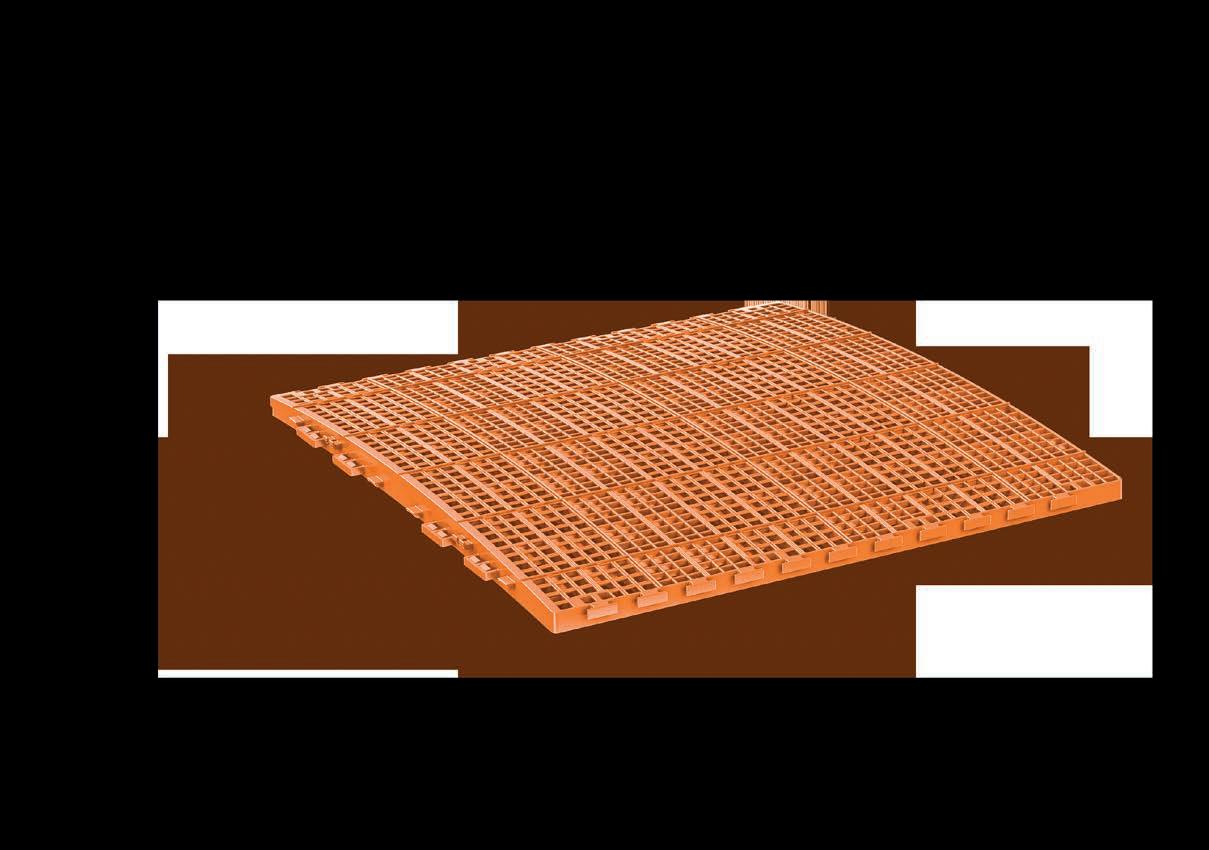


www.poultryplast.com






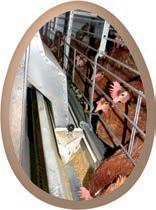

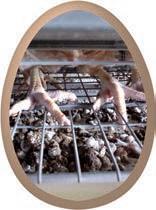



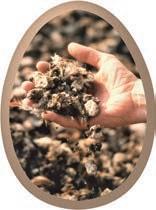






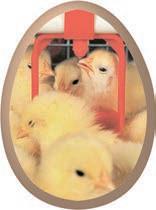




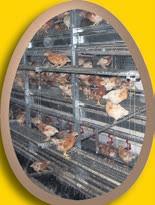








ORIGINAL POULTRY EQUIPMENT GmbH & Co. KG Dassendaler Weg 13 • D-47665 Sonsbeck (Germany) Telefon +49 (0) 2838 912-0 • Telefax+49 (0) 2838 2791 info@specht-tenelsen.de • www.specht-tenelsen.de ® • Cage floor • Group cage system (enriched cage) • Egg belt • Layer battery • Egg collecting system • Manure drying system • Rearing in cages • Rearing in aviary system • Feeding system SPECHT is everywhere hens are! ORIGINAL eco and livestock friendly • Layers in Varia-System where








































































































































































































